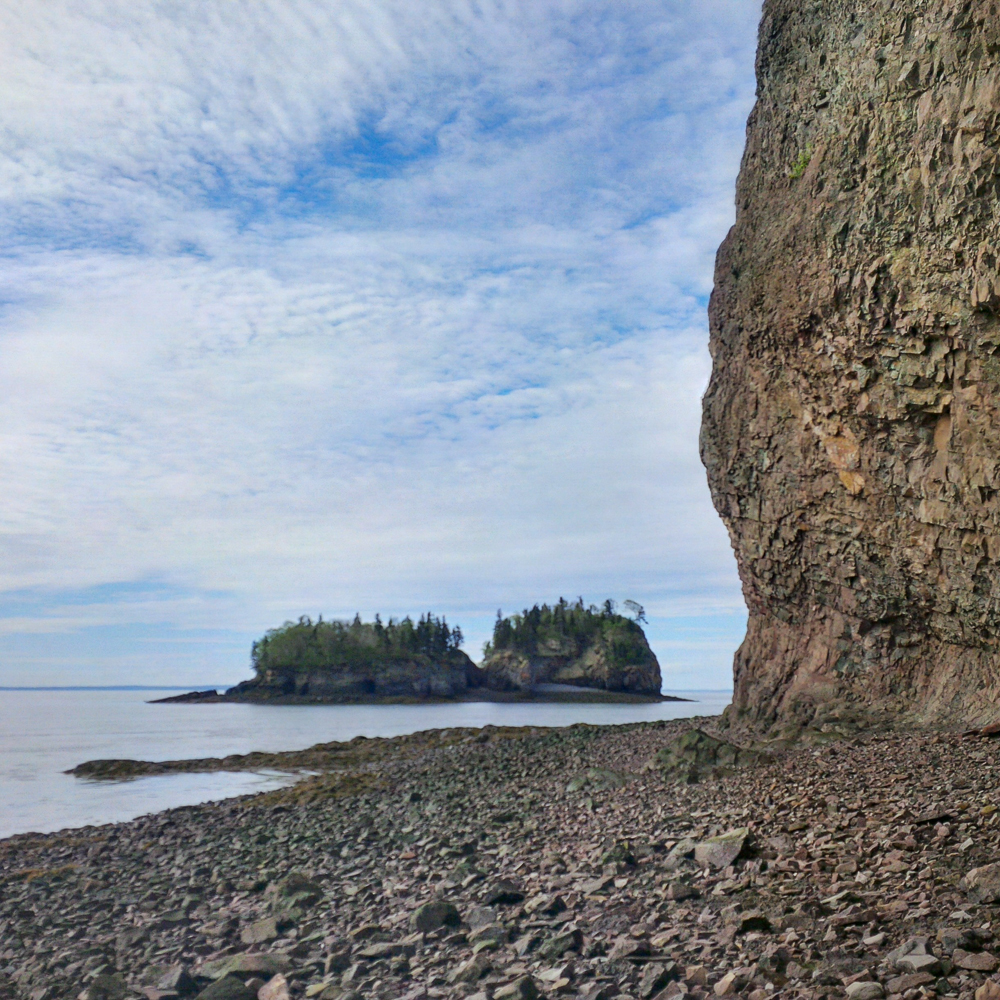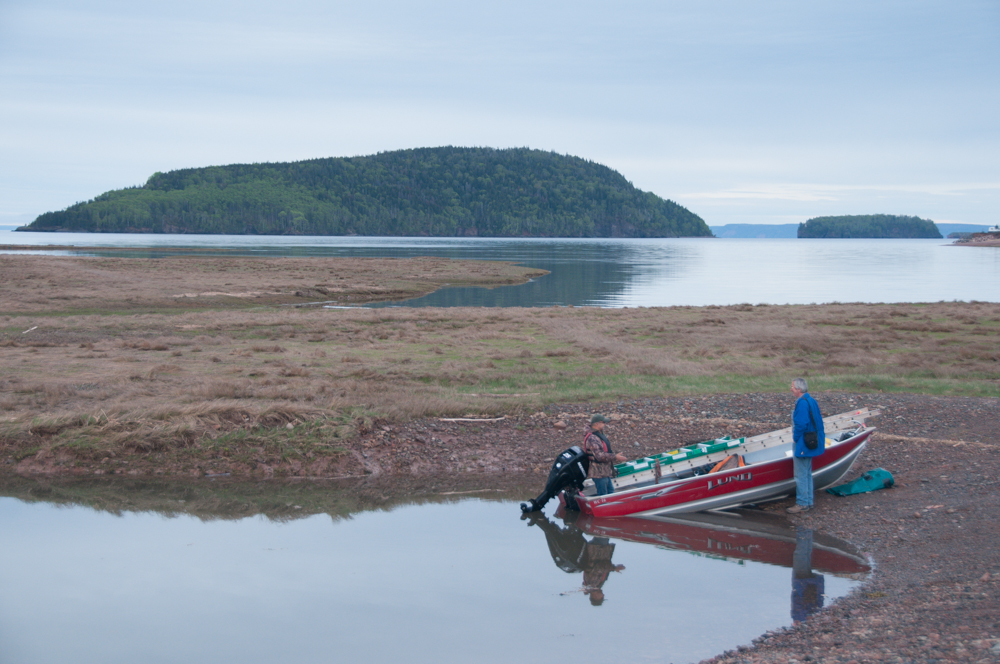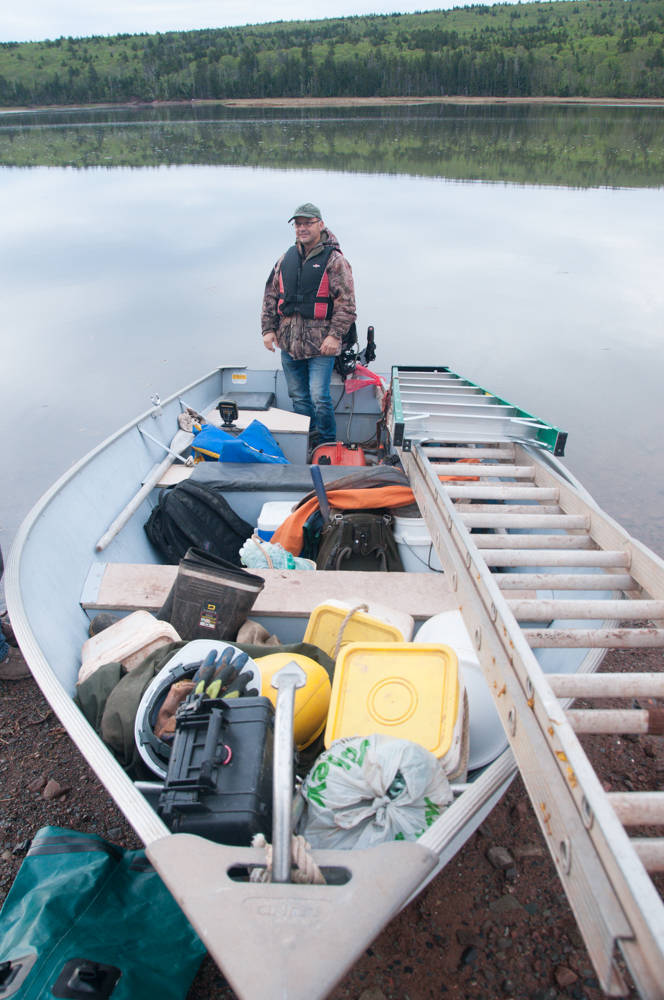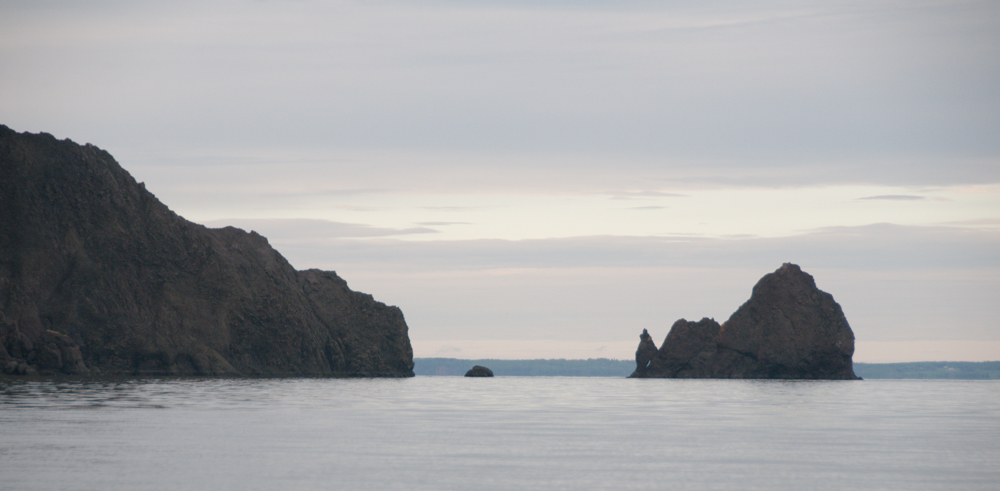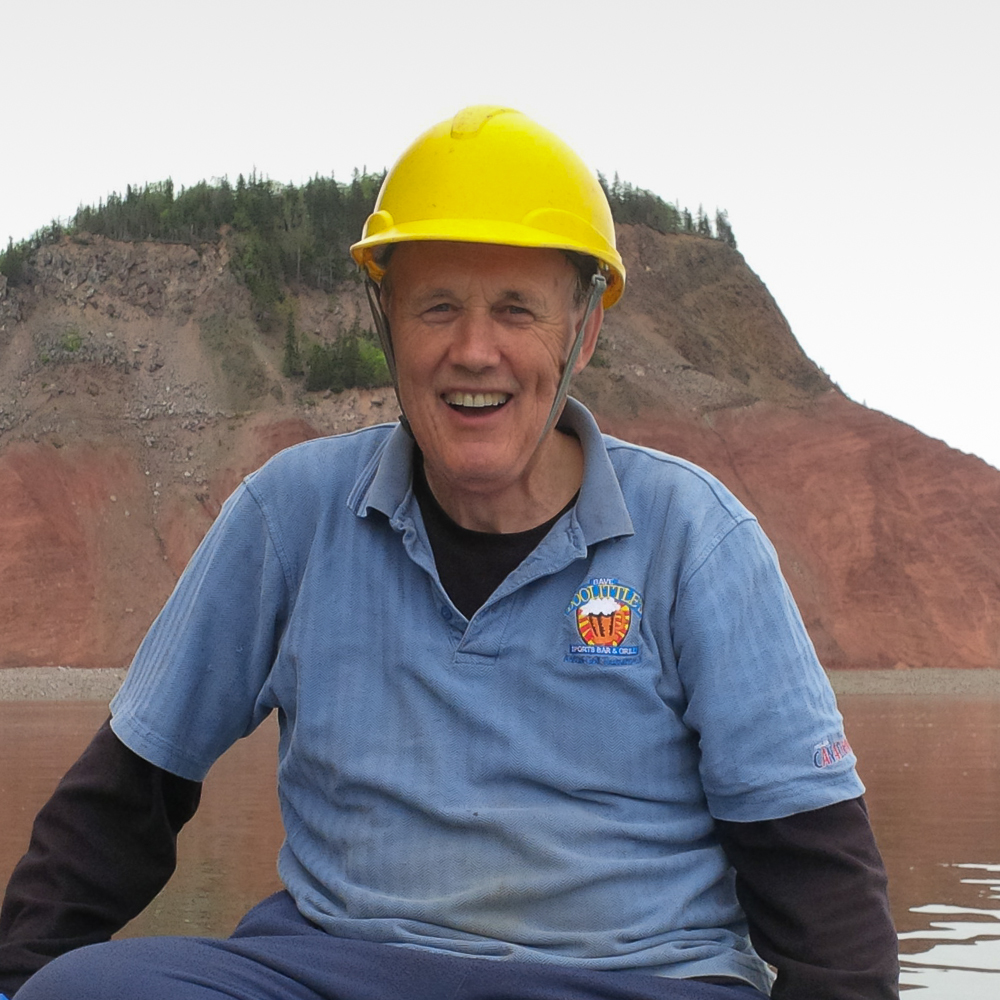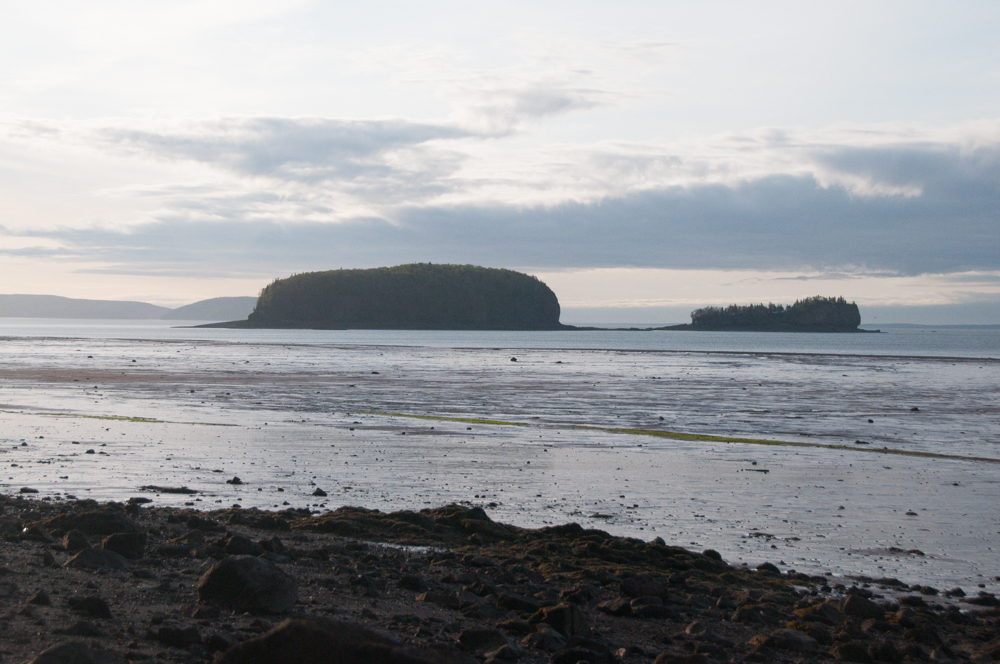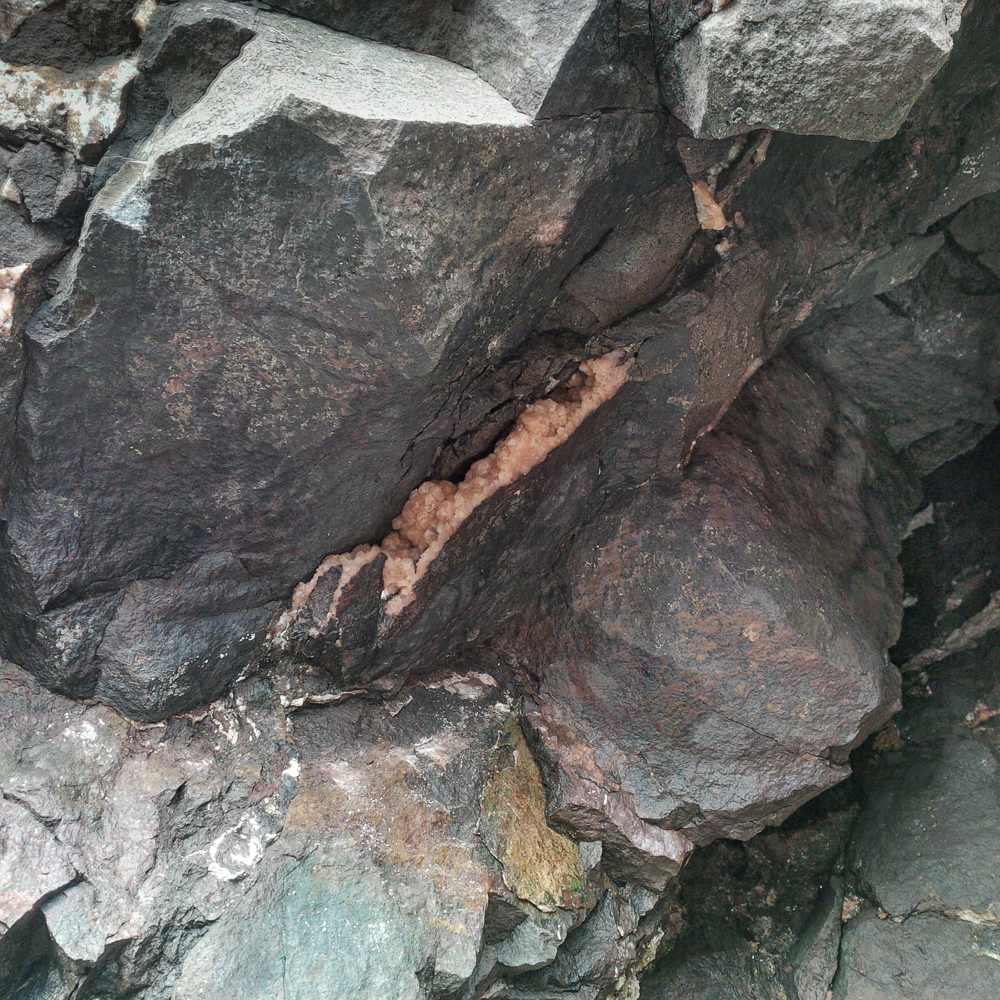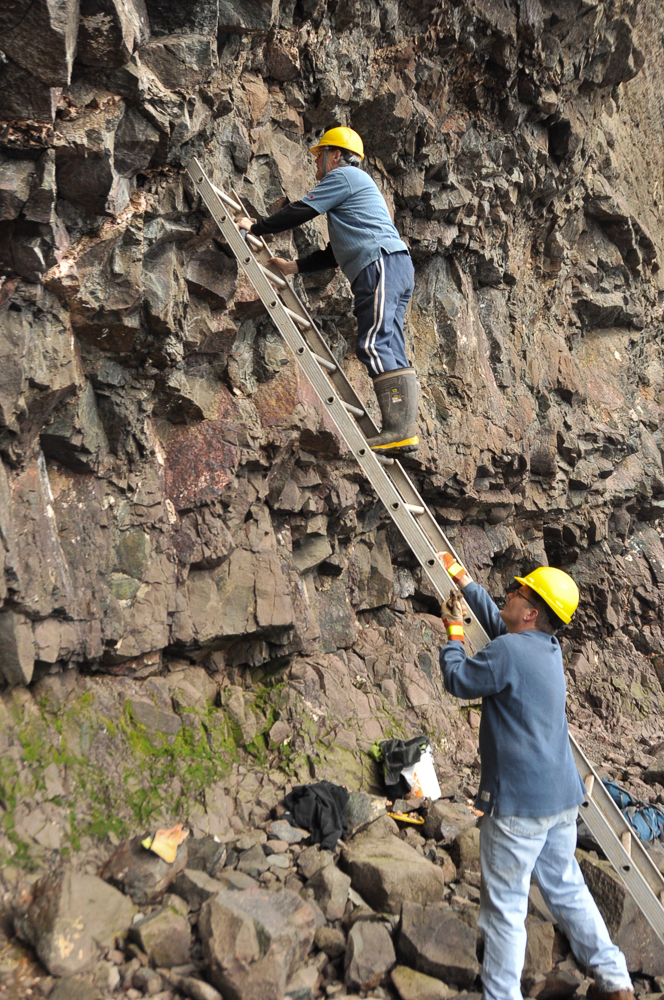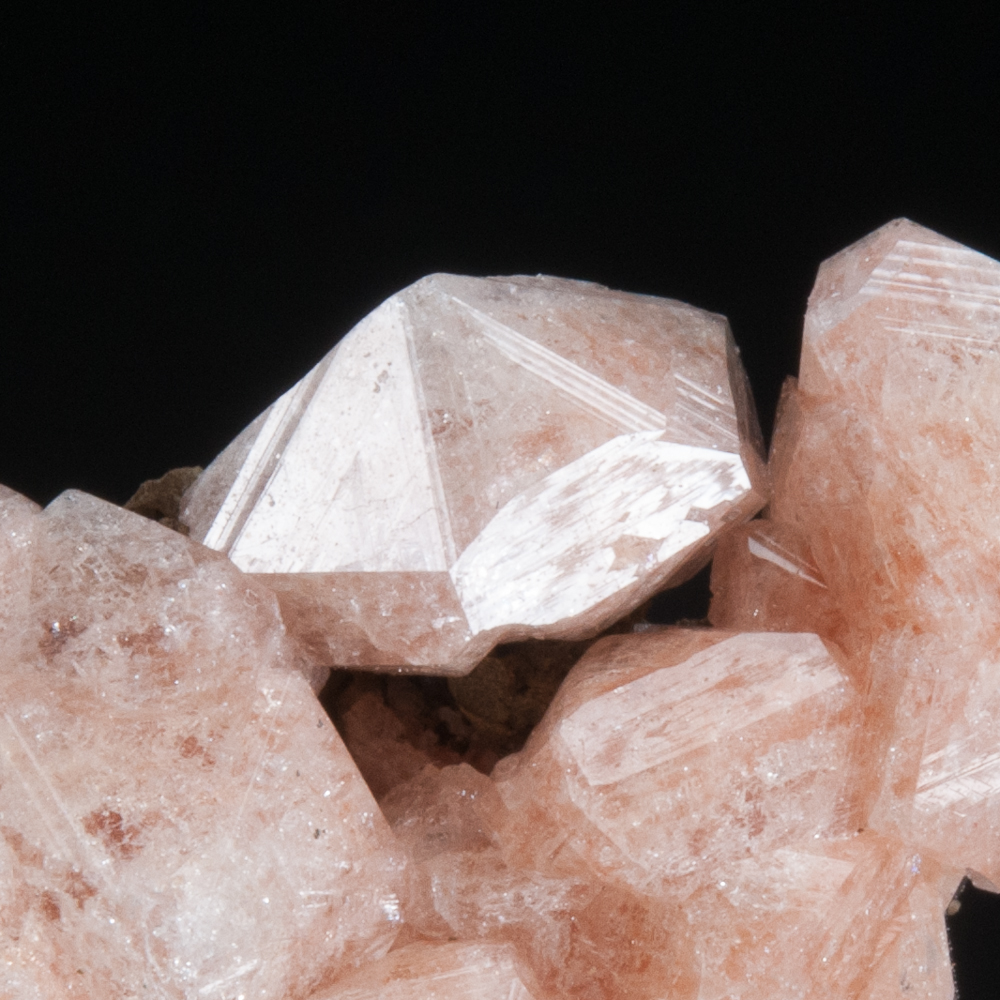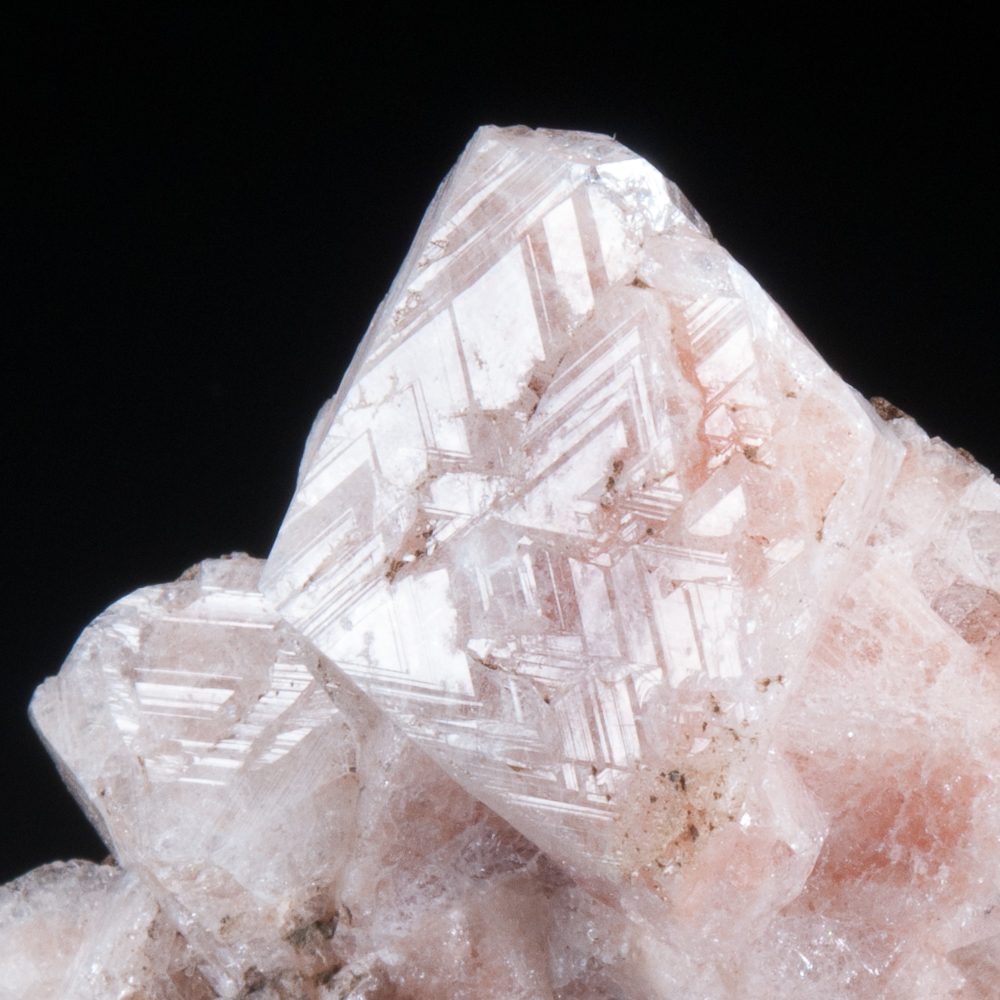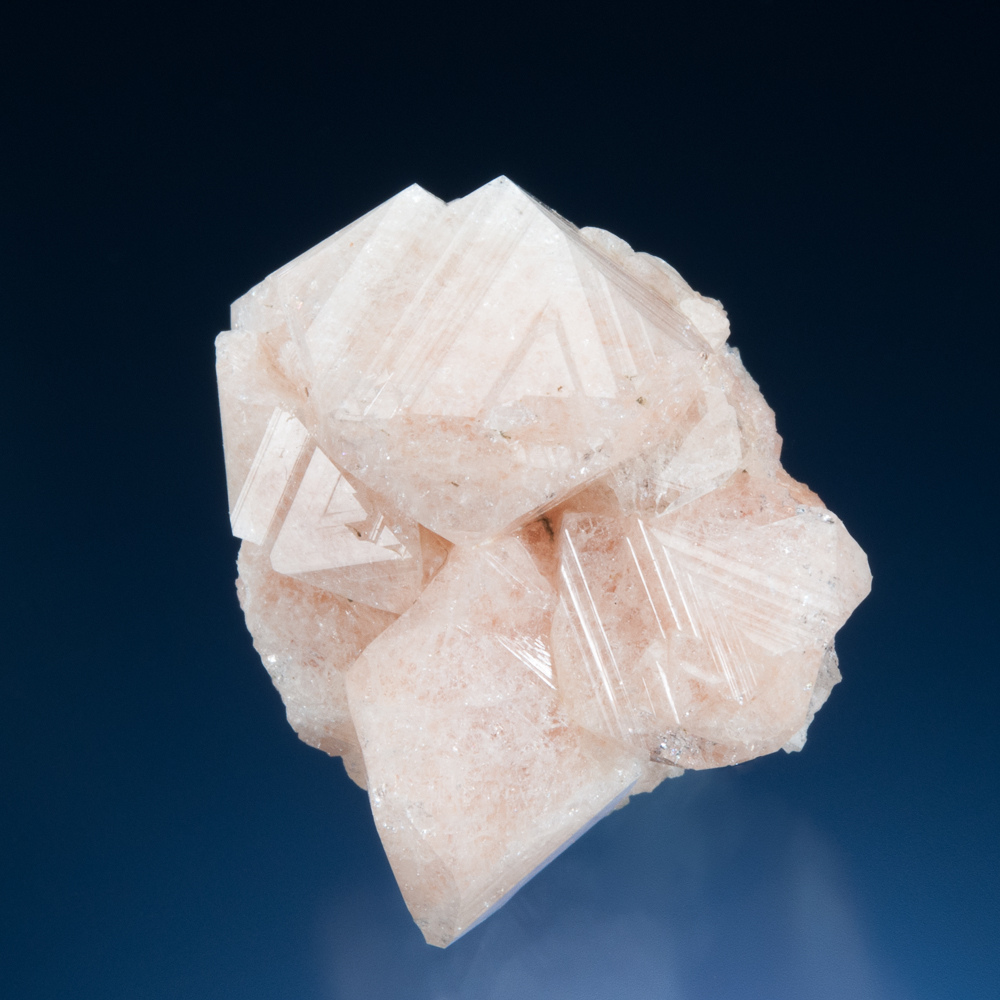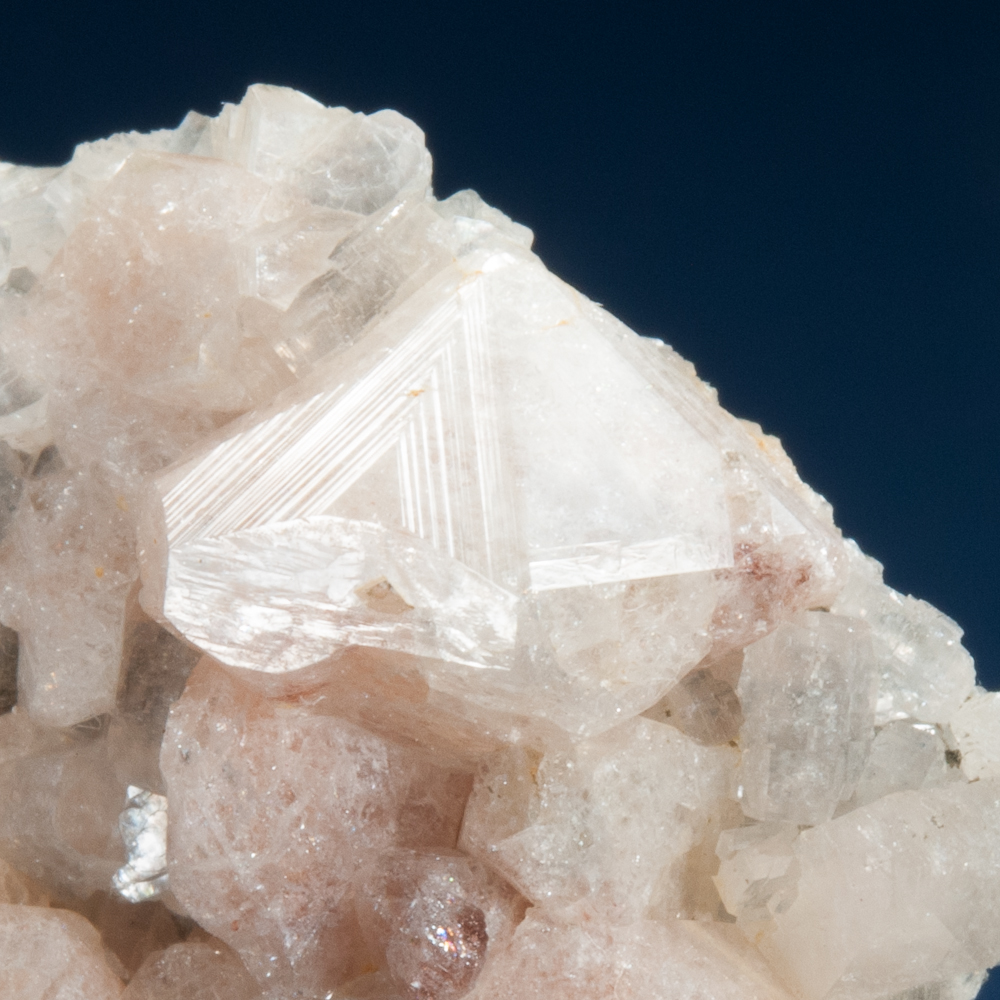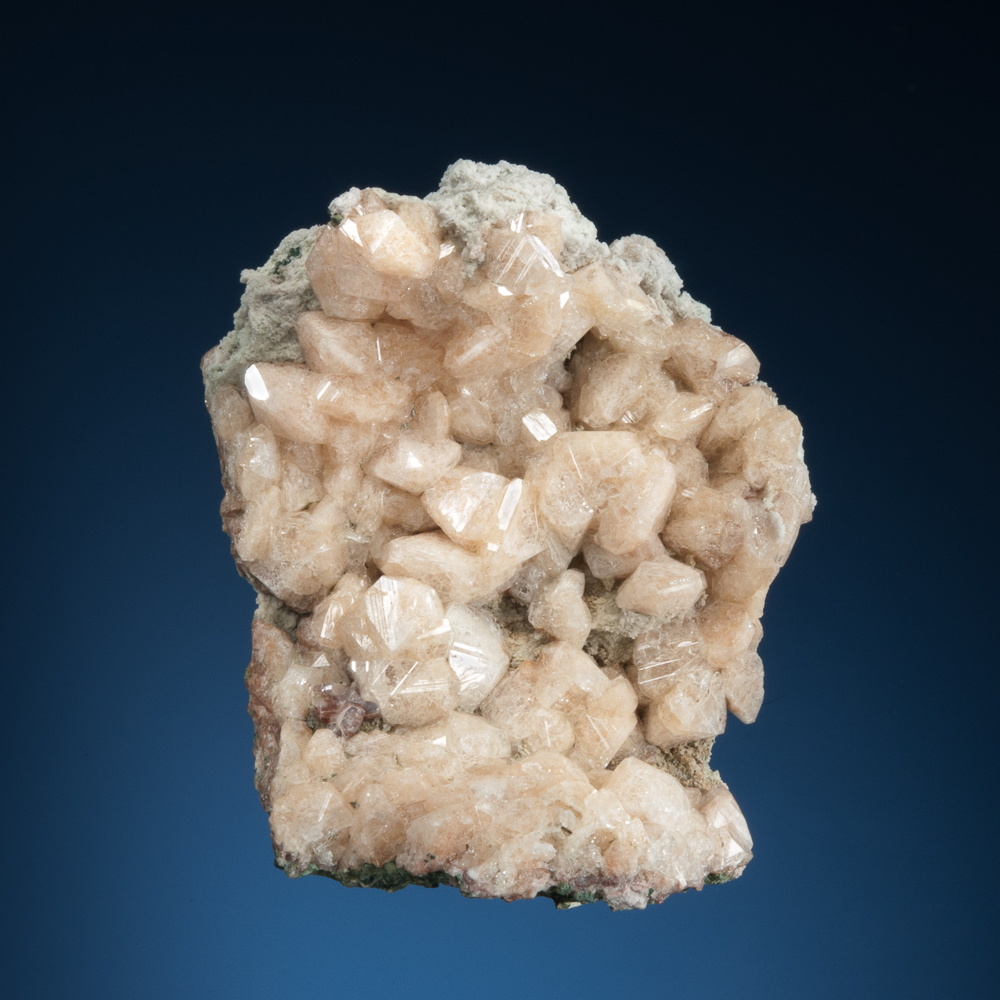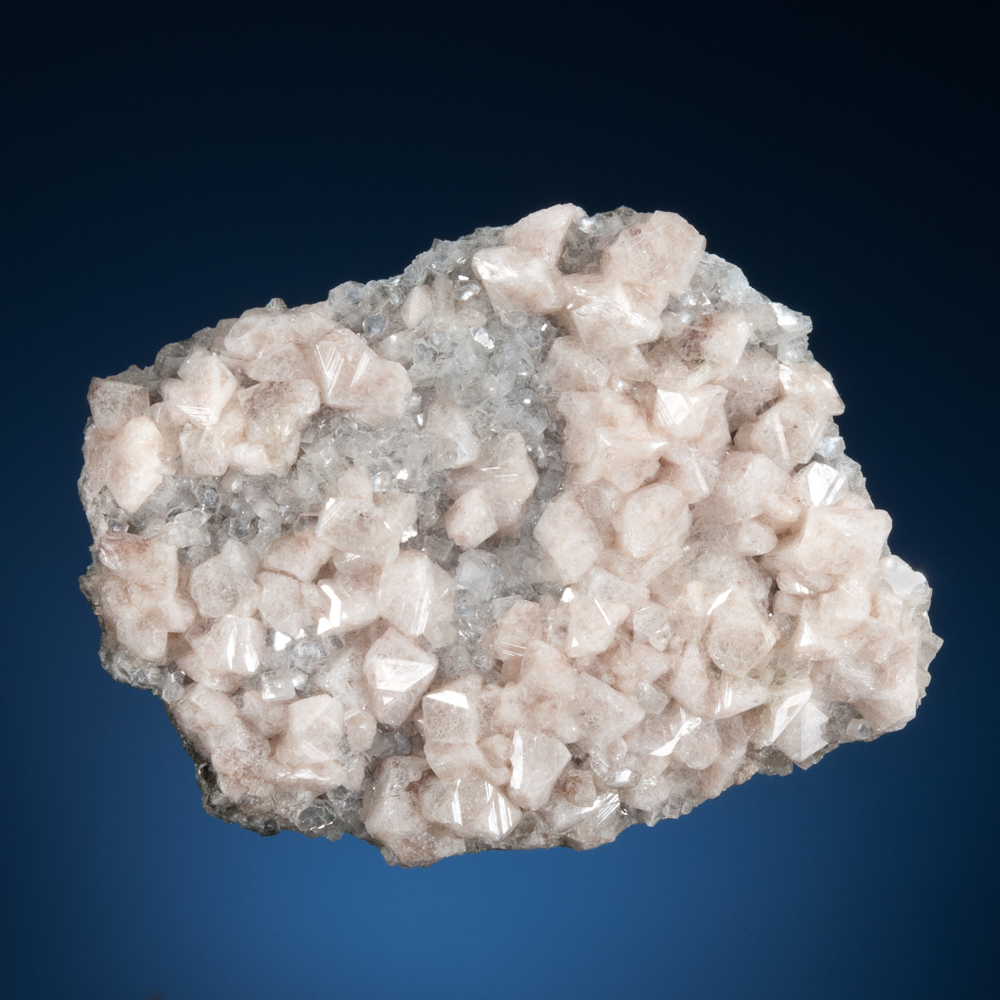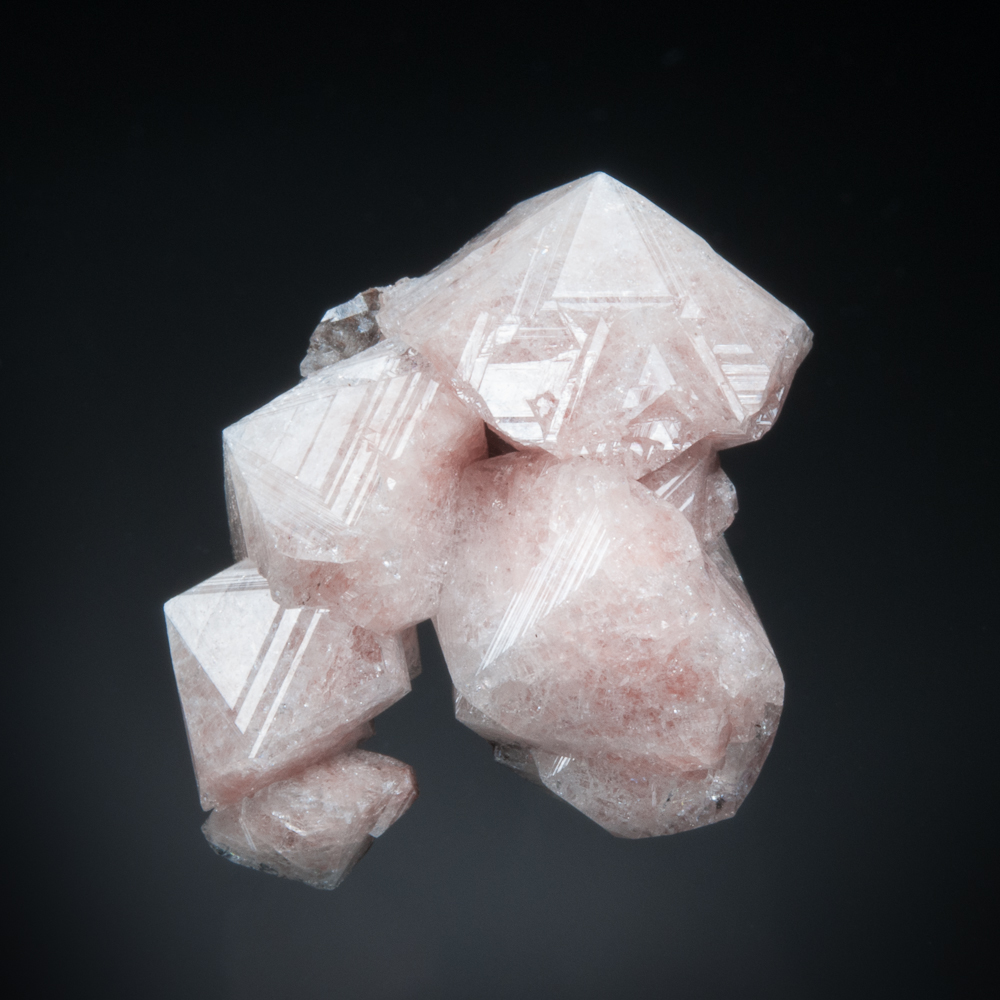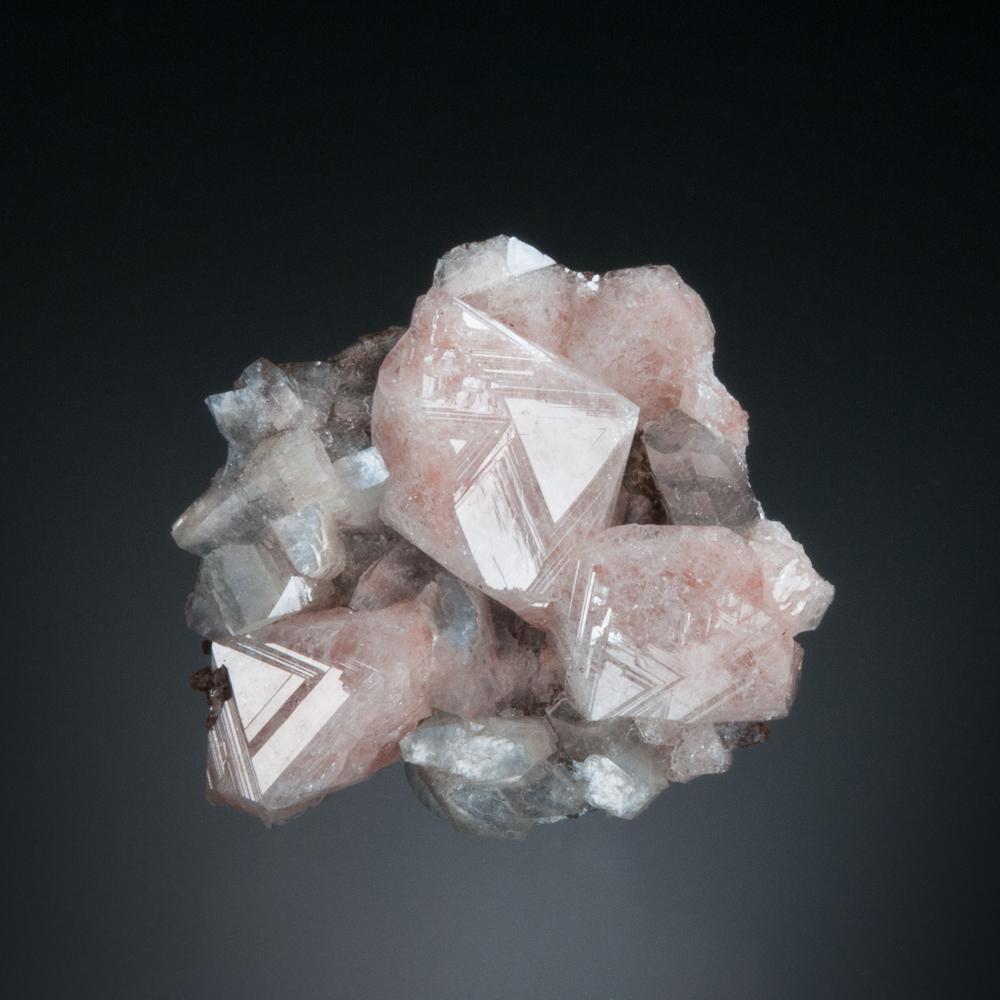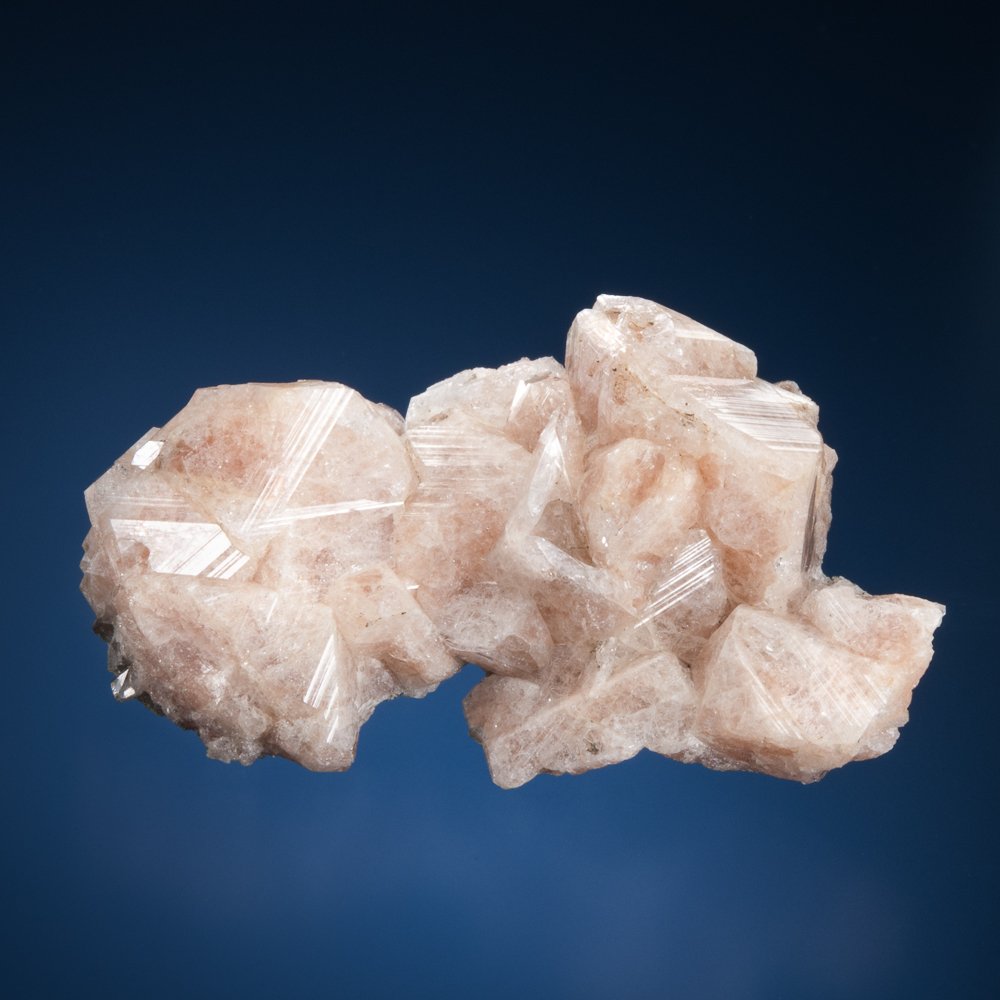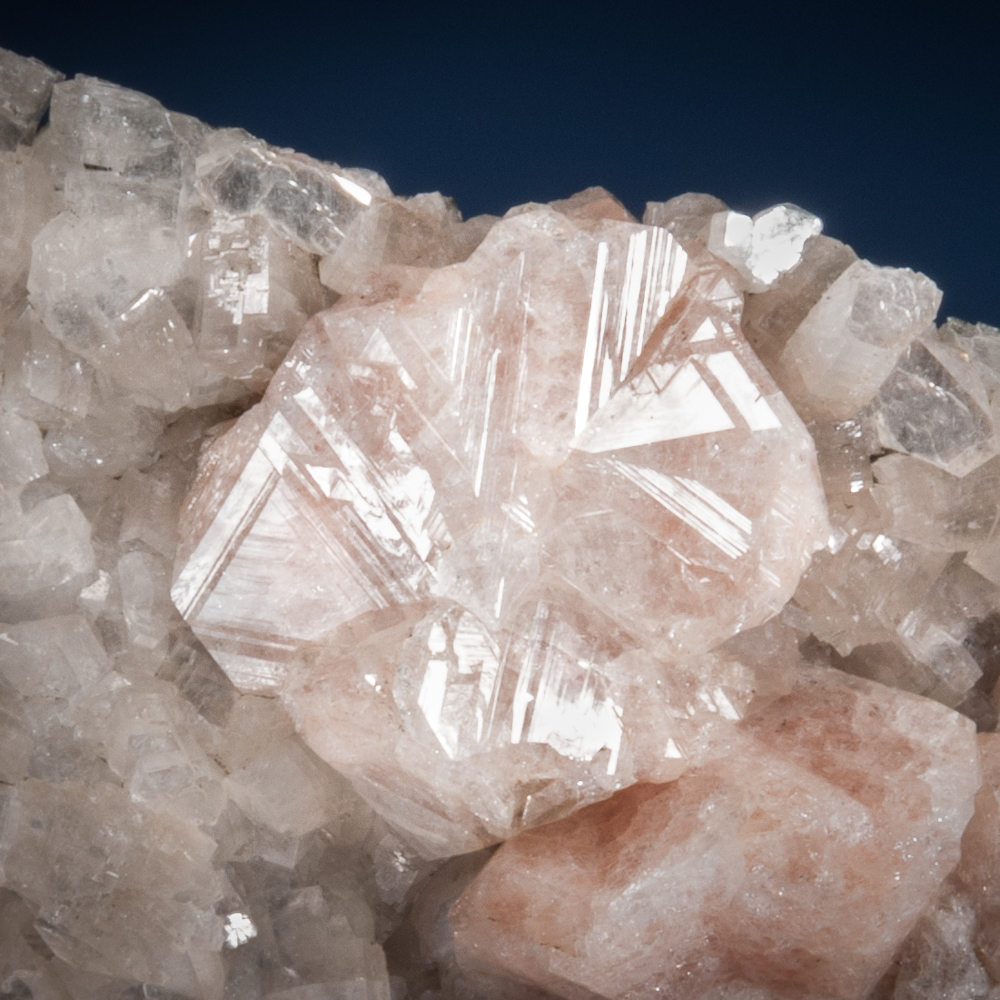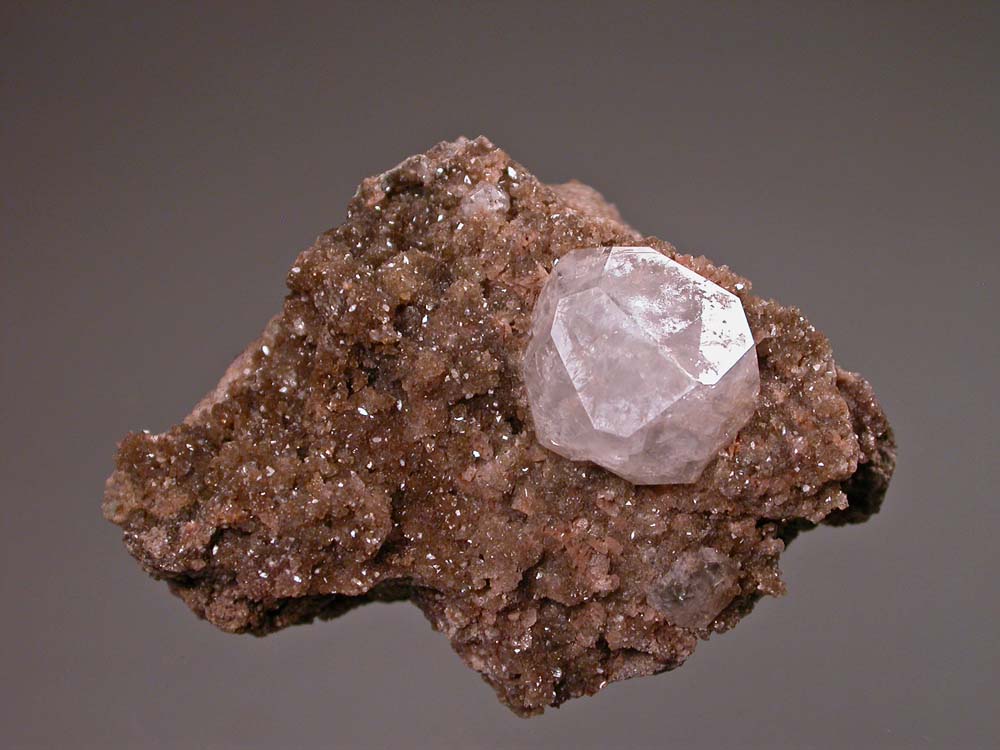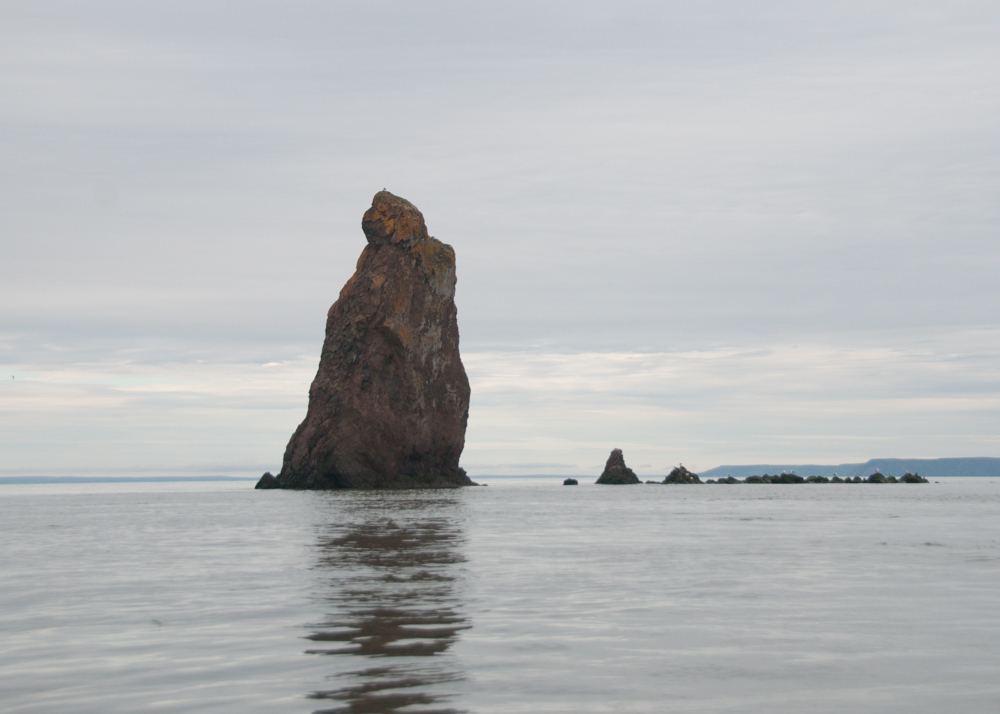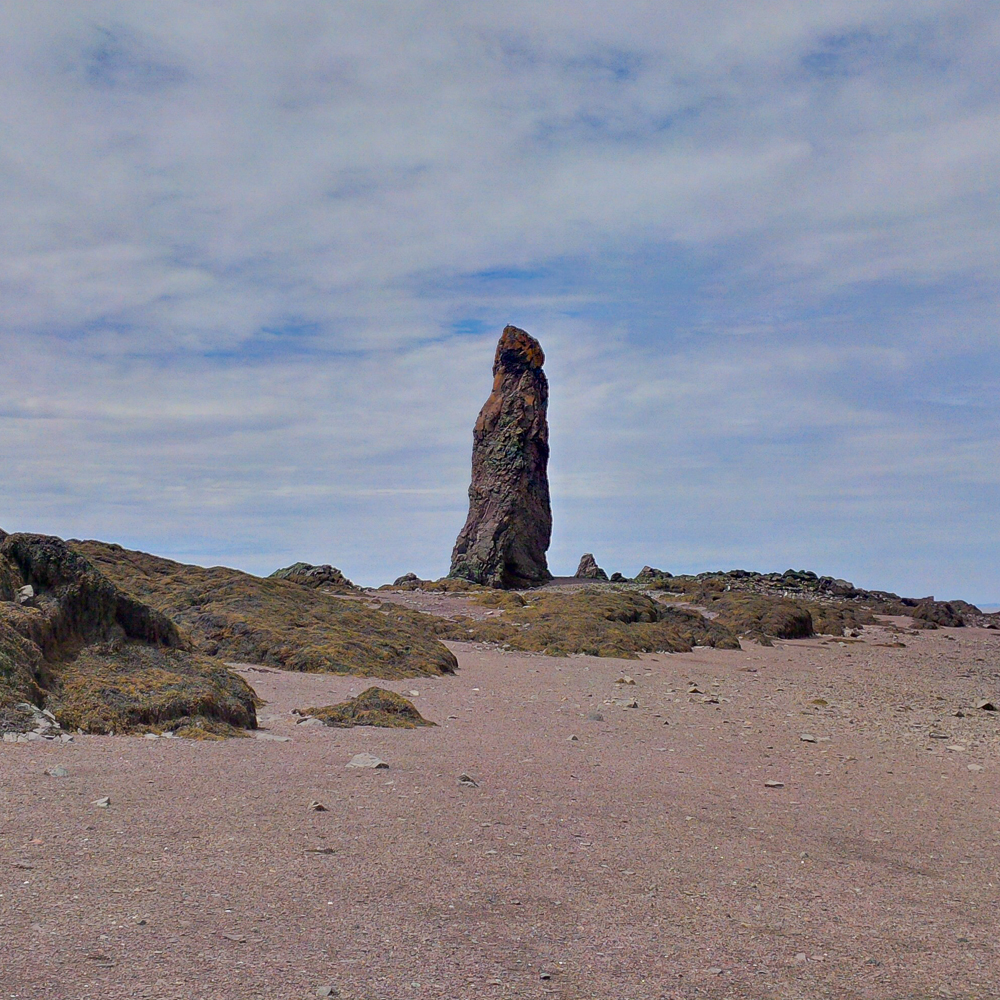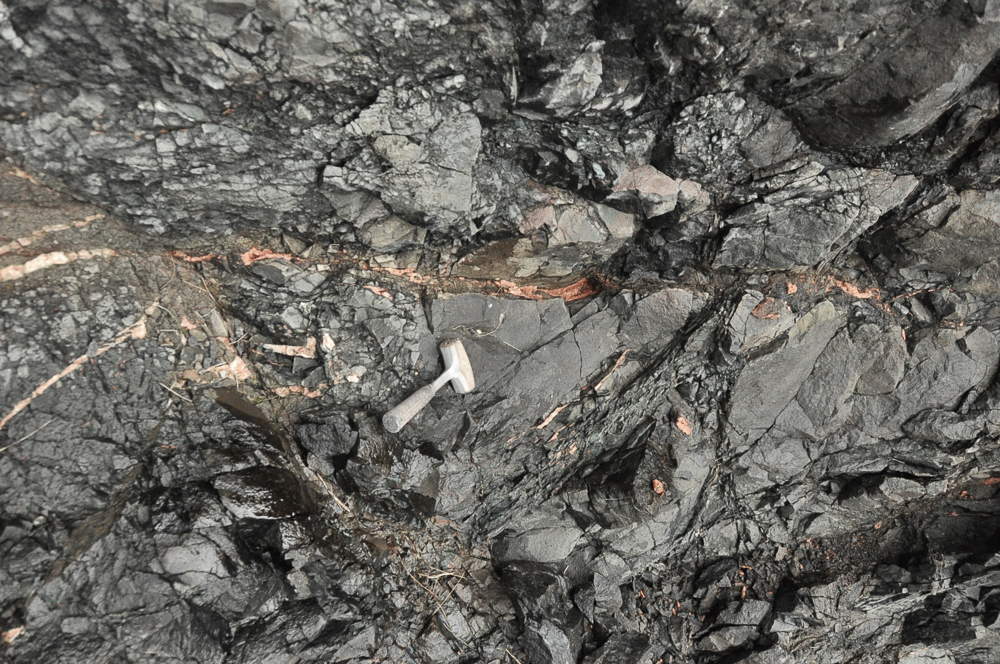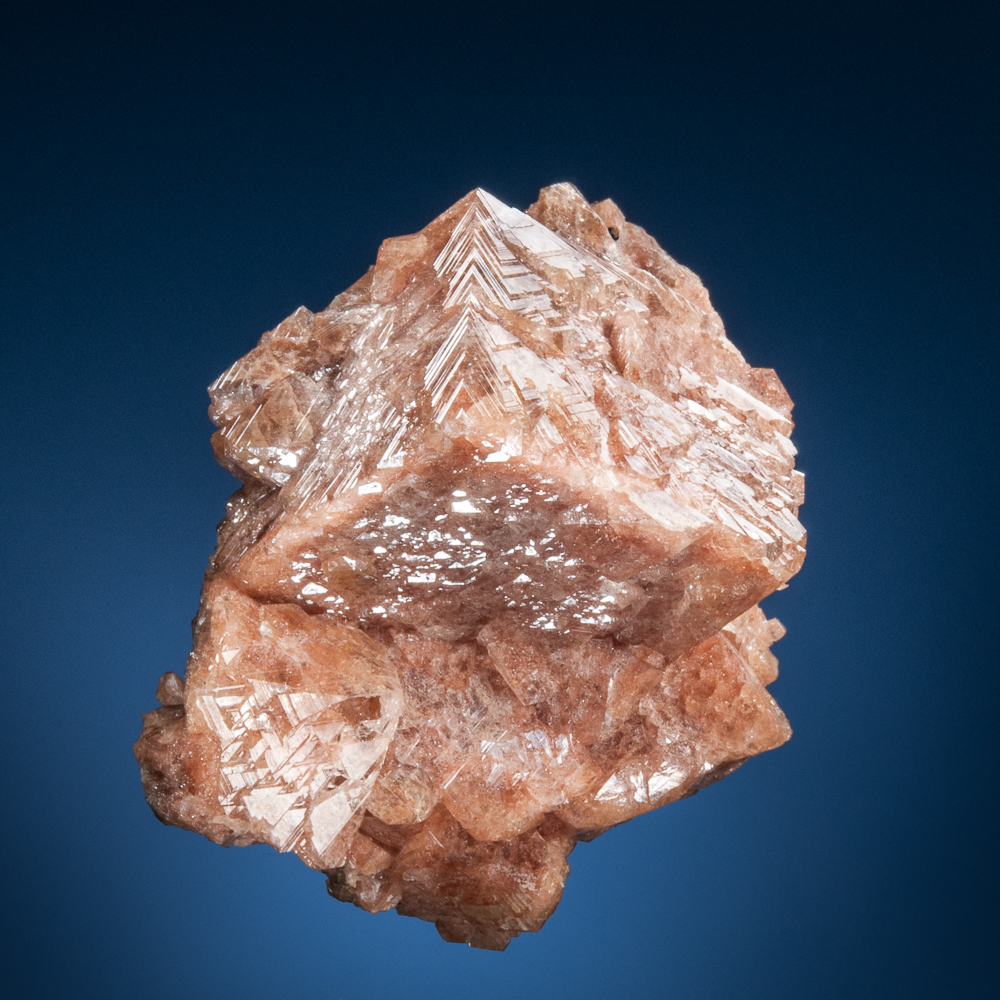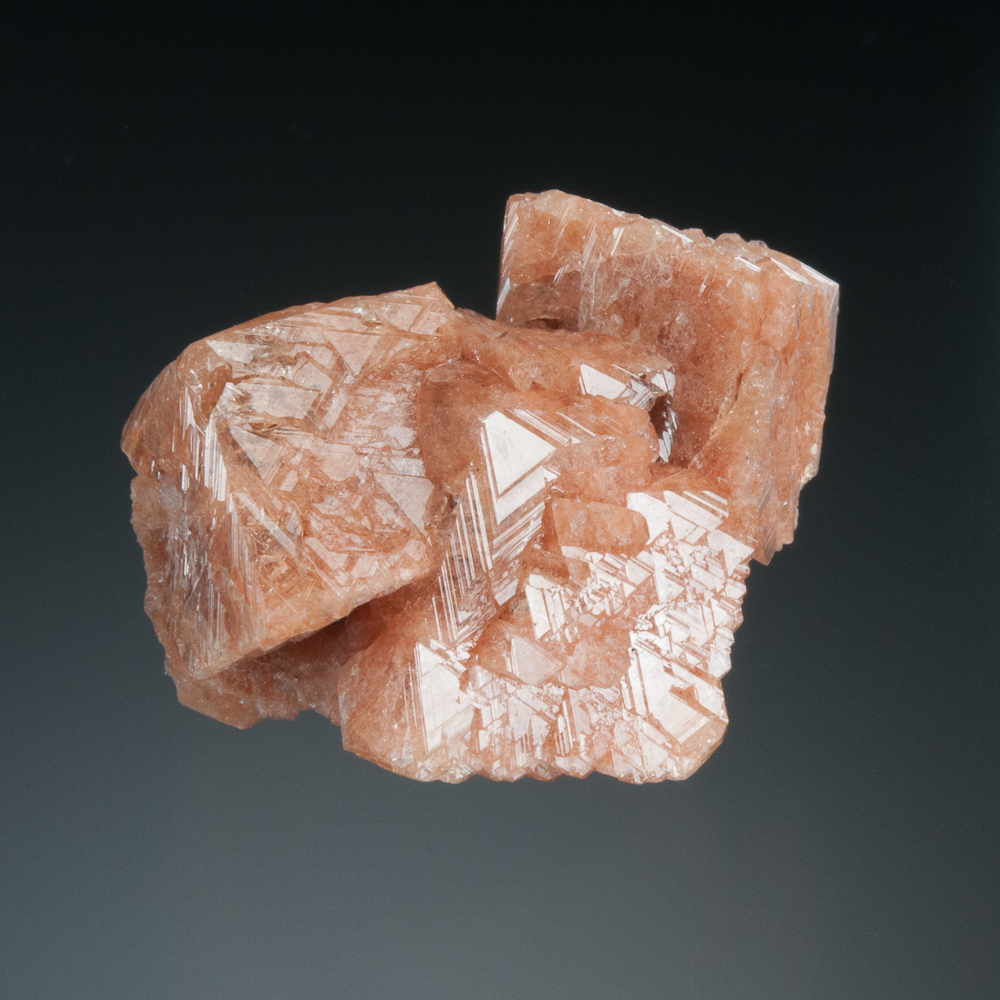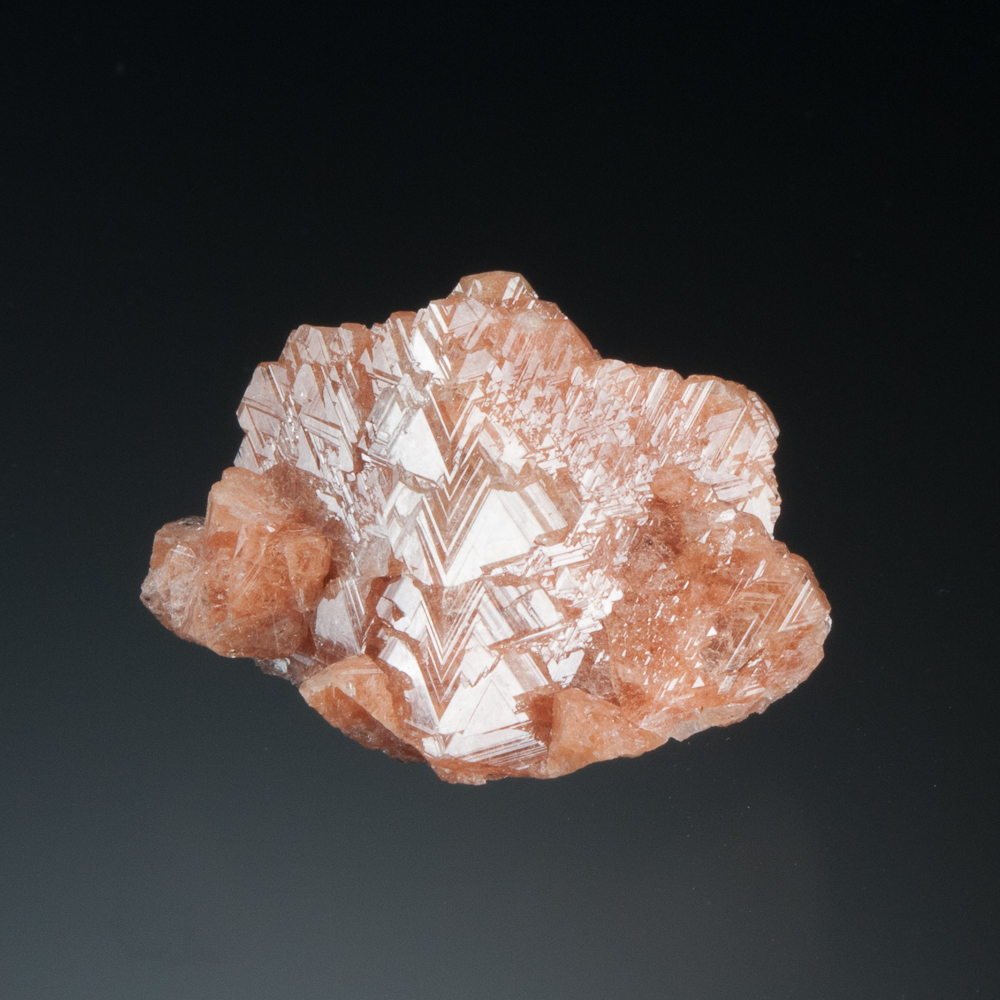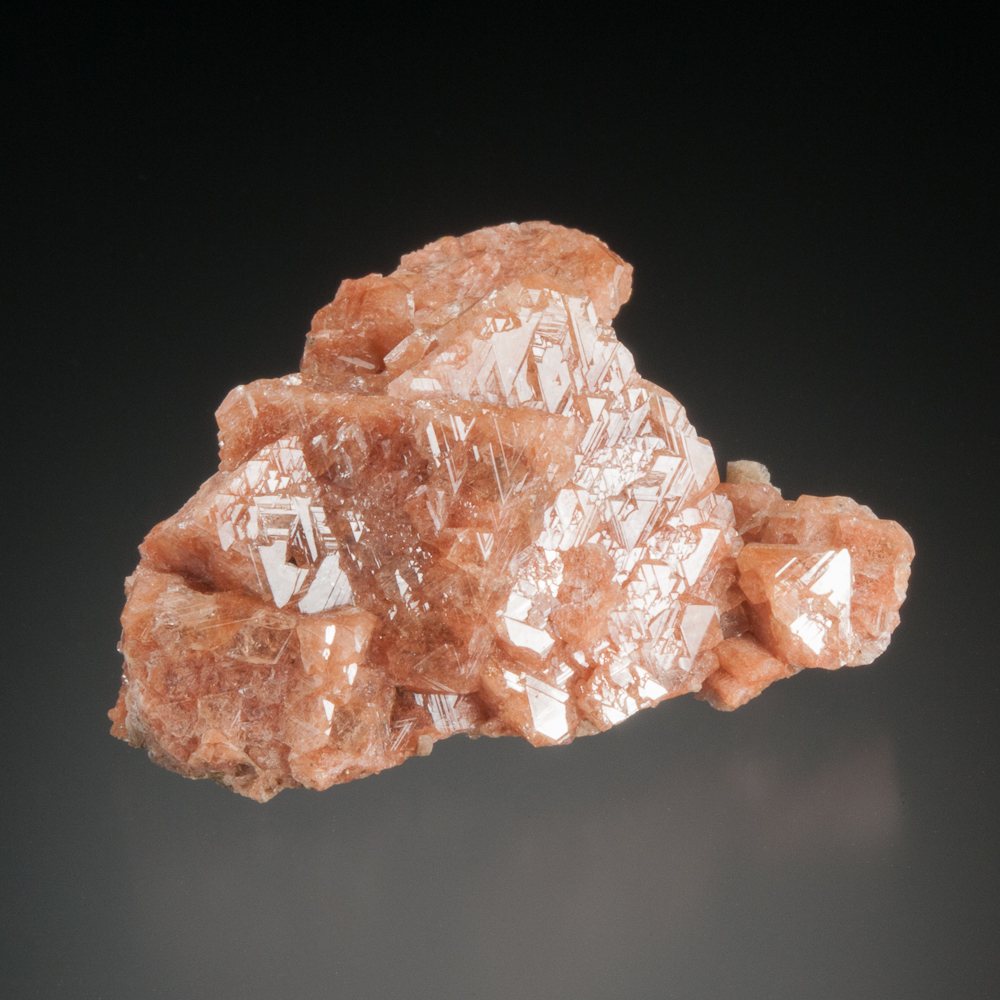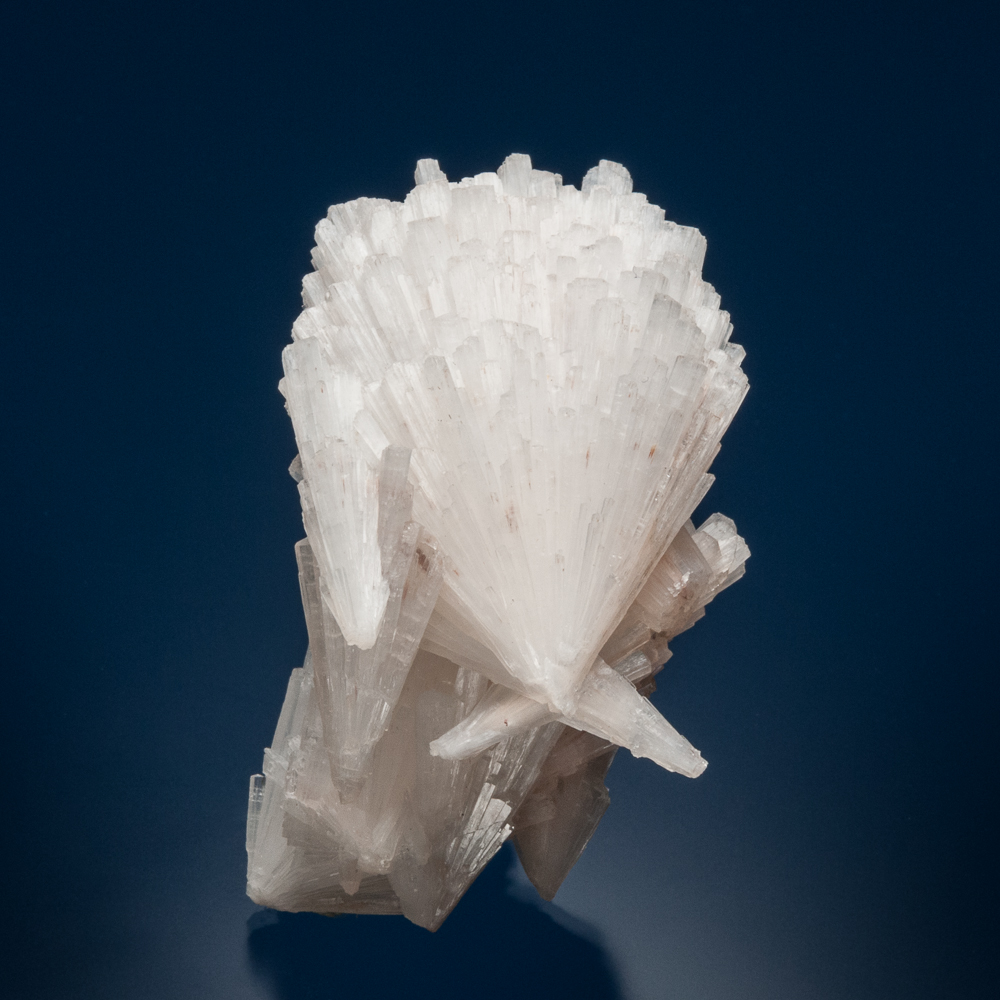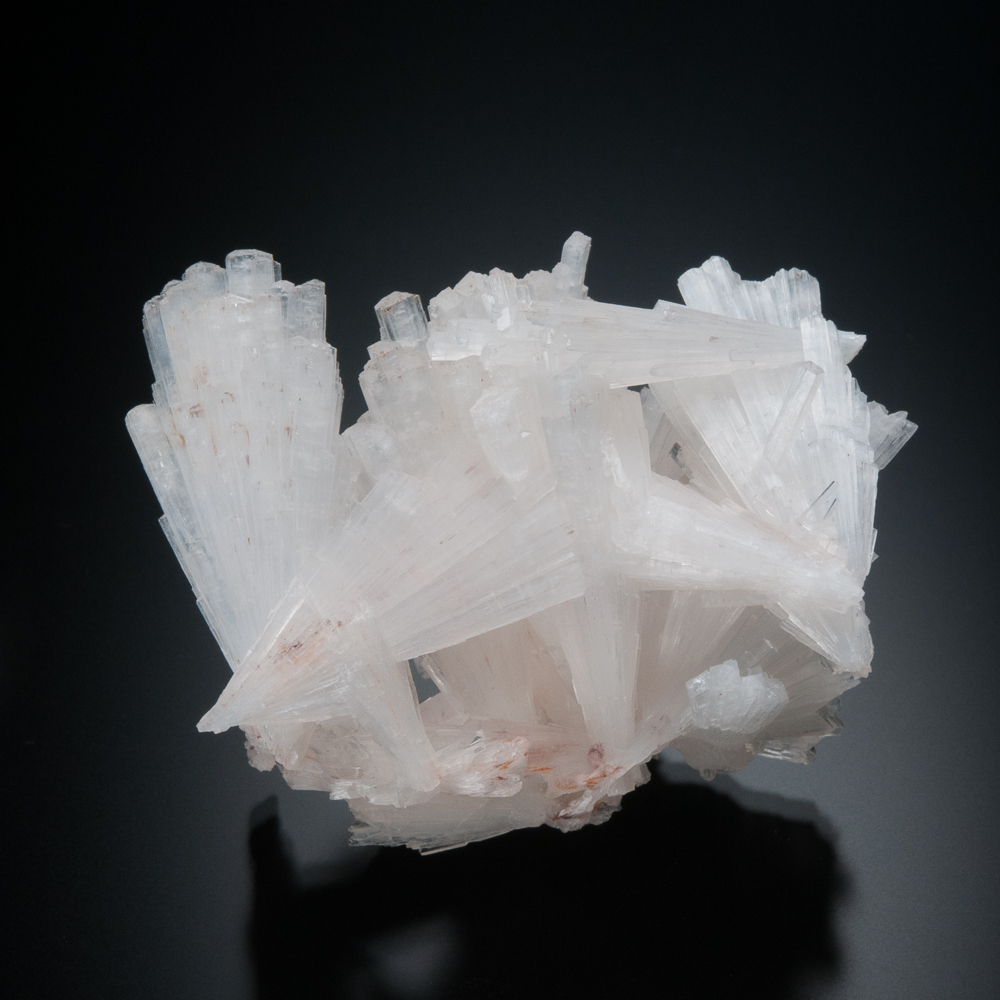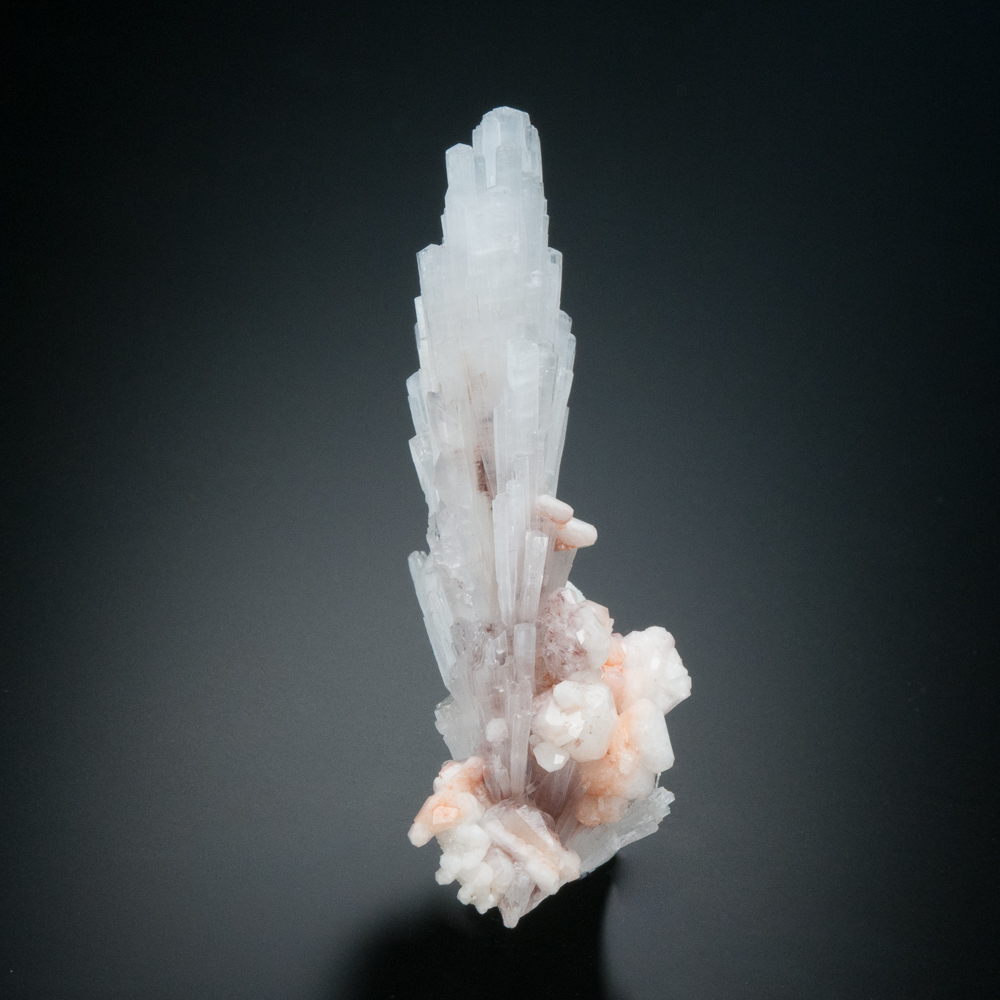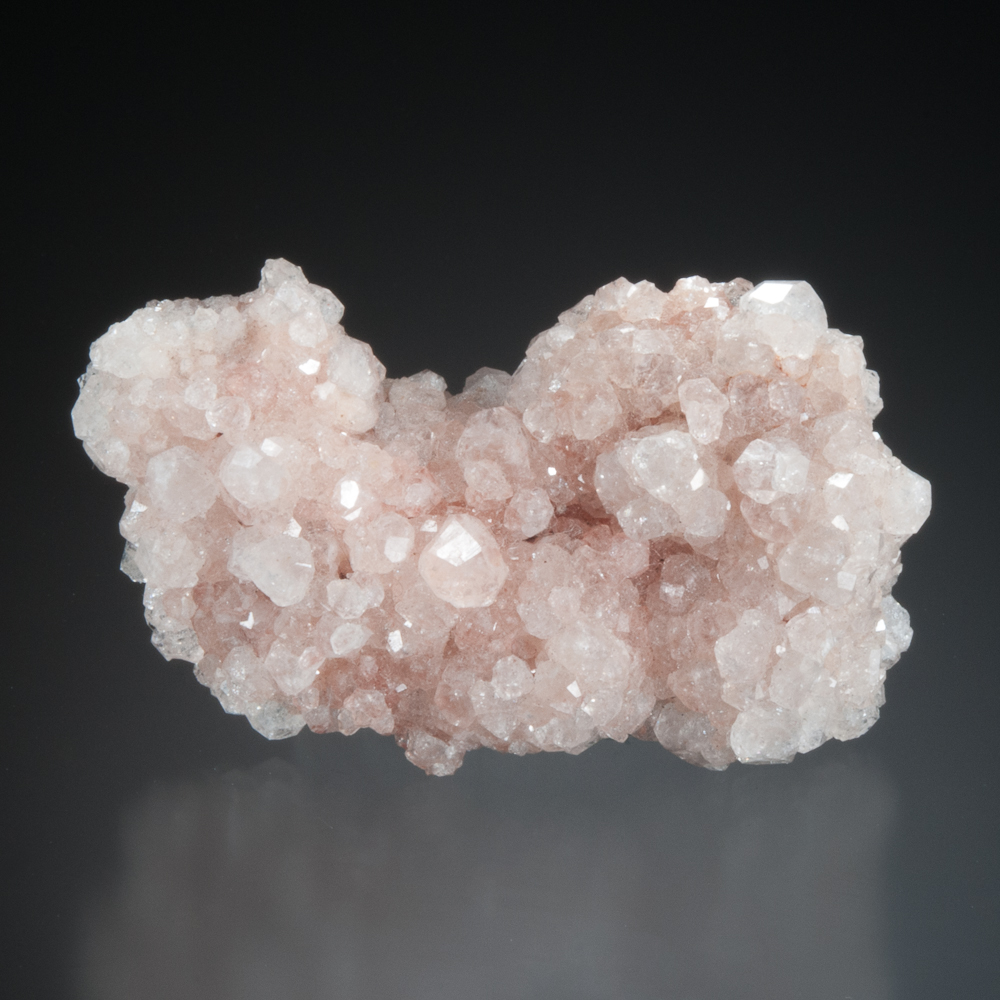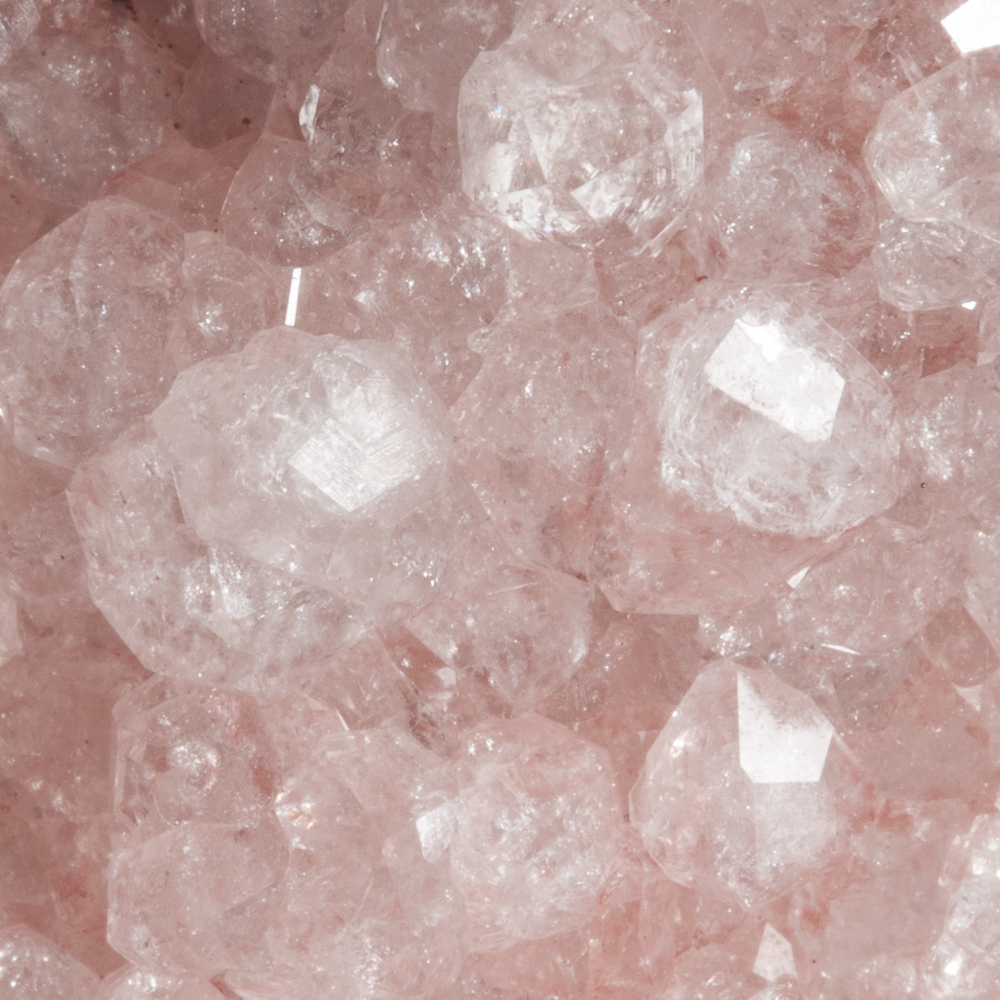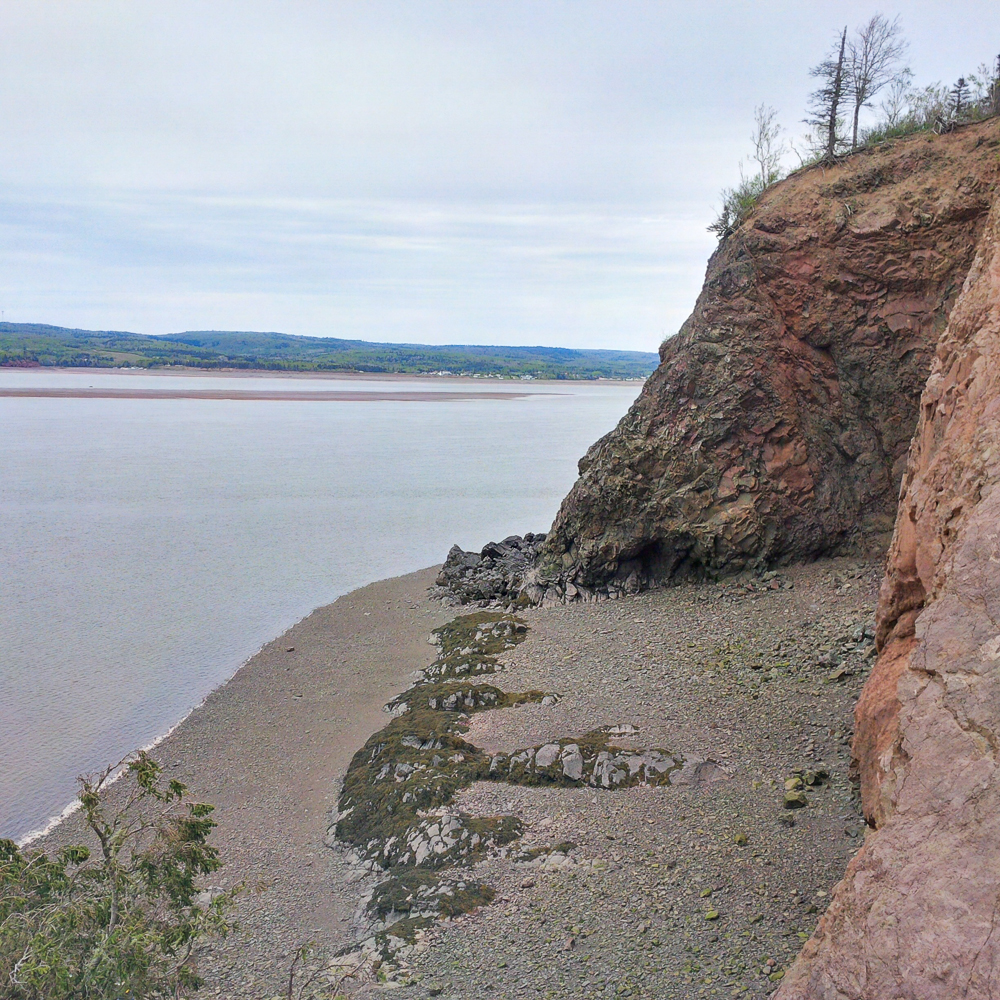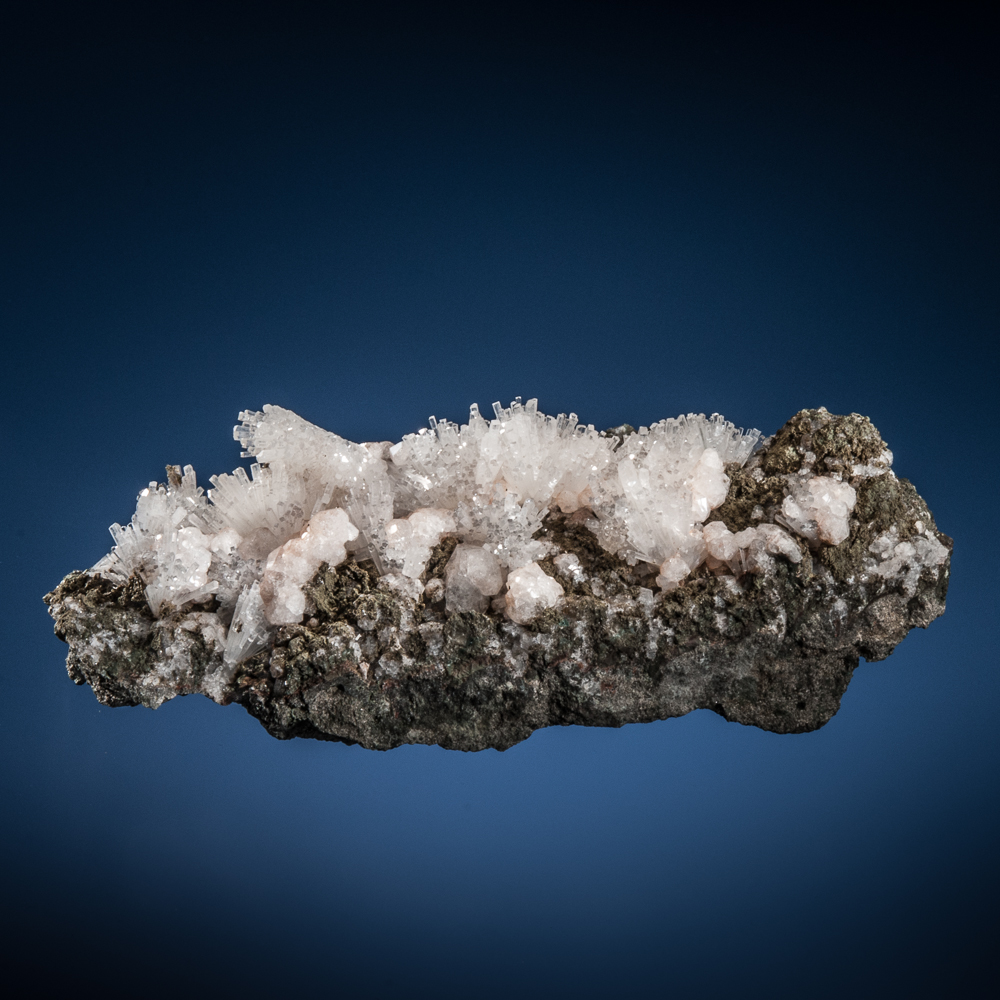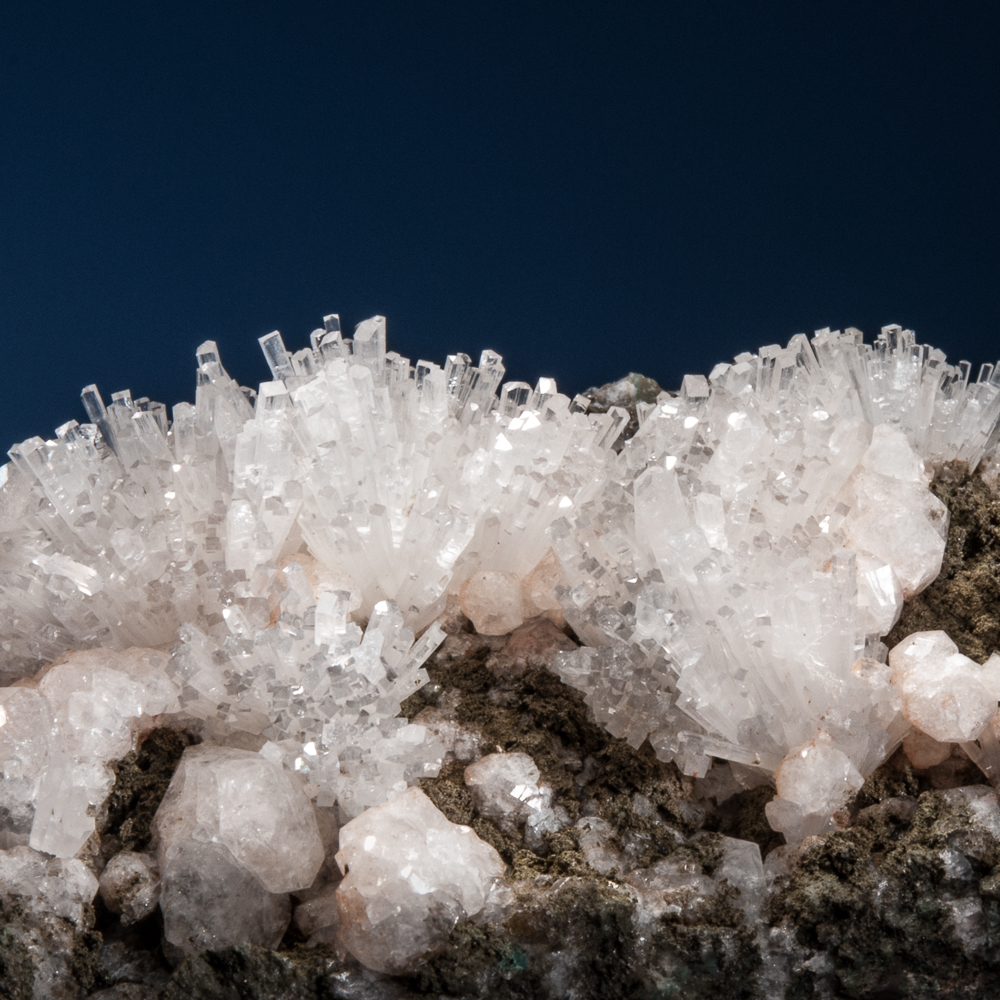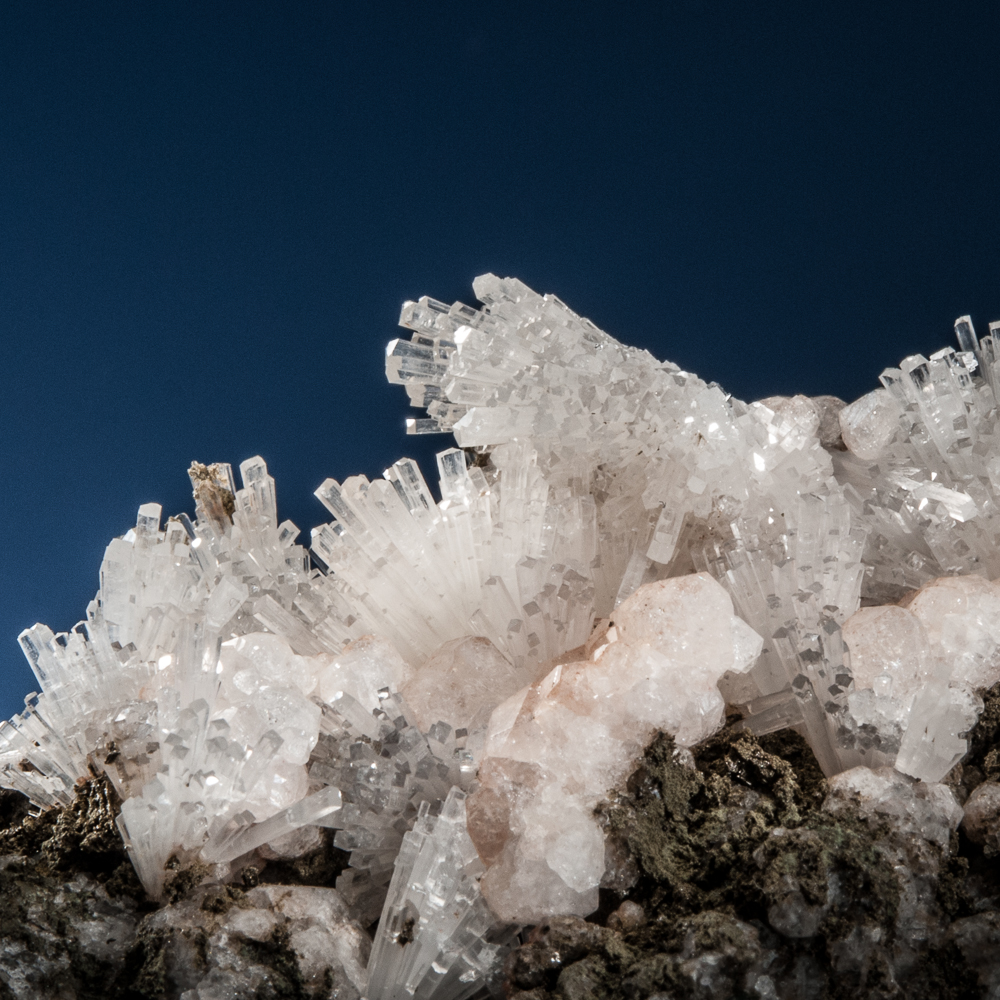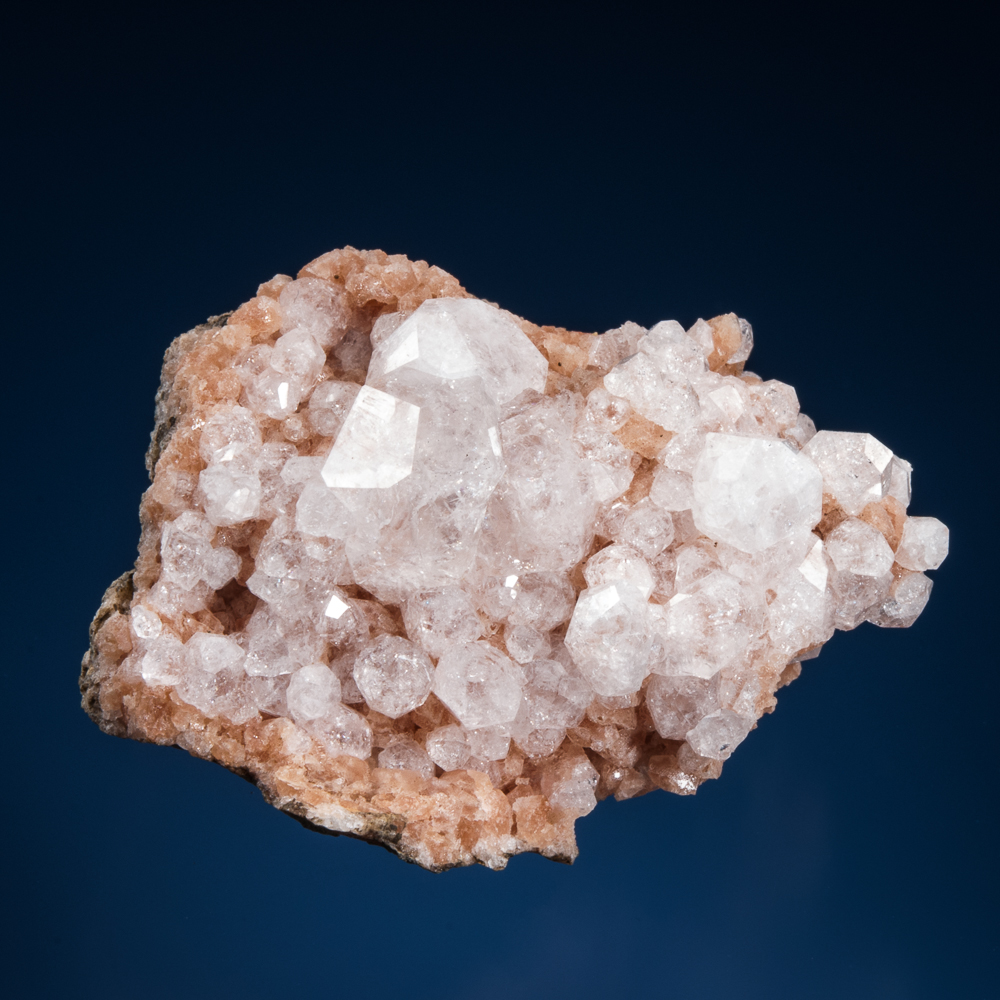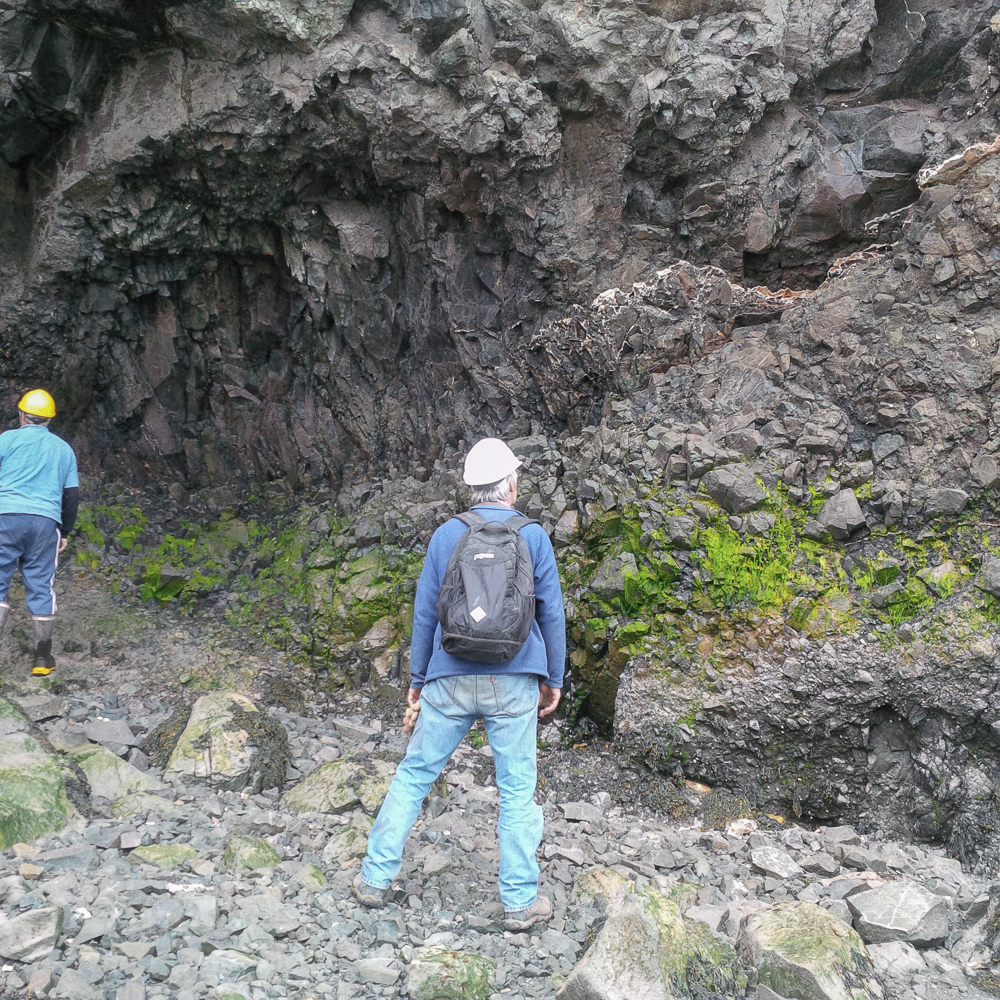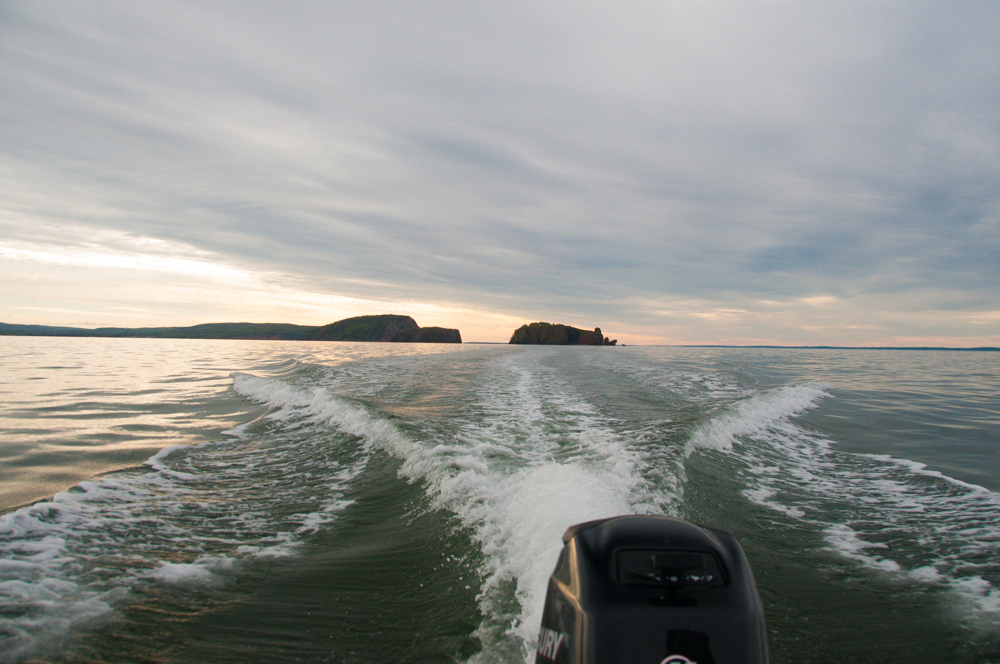Categories
Archives
Nova Scotia’s Bay of Fundy has produced many of the fine mineral specimens for over a century, and it has been particularly productive over the past decade. Although 2016 saw a significant overall decline, with many of the known mineralized zones diminished, great pieces are still found once in a while.
My first post about this region is Nova Scotia Mineral Collecting – The Bay of Fundy. If you haven’t yet read it, it really serves as Part 1 – it’s a good place to start for an introduction, because it includes the background/overview information about this amazing region. Part 1 focused on three classic localities: Wasson’s Bluff, Amethyst Cove (often referred to more generally as Cape Blomidon), and Cape D’Or. This post is really Bay of Fundy Part 2: Adventure to the Islands.
Seven Islands
There are mineral occurrences on a number of islands in the Bay of Fundy. In particular, two groups of islands near the north shore of the Bay of Fundy’s Minas Basin have produced excellent mineral specimens, going back to the nineteenth century: Two Islands and Five Islands. (If we were only going to give them the highly creative names Two Islands and Five Islands, could we not have named them Seven Islands? The two groups are only a few kilometres apart… but no…)
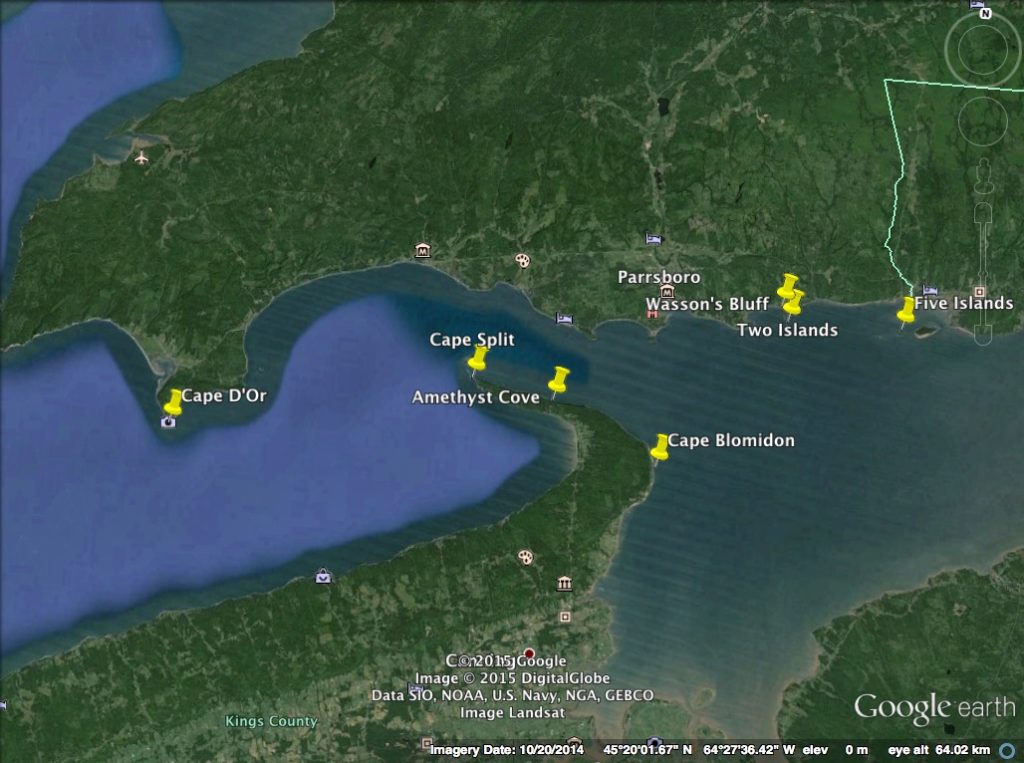
Classic mineral collecting localities, Bay of Fundy, Nova Scotia
(Google Earth 2015, Image credits: Landsat, NOAA.)
World-Class Gmelinite
Although the localities at Two Islands and Five Islands have produced super specimens of many minerals, they are particularly notable for having produced world-class gmelinite crystals. (Specifically, these are specimens of gmelinite-Na, as confirmed by analysis by the RRUFF Project team.)
Gmelinite from the Islands is seen in two distinctly separate modes of occurrence, and both include superb specimens for the mineral. At Two Islands, the gmelinite crystals are well-formed individuals and groups of individuals, sometimes twinned – typically these are pale pink to nearly colourless, sometimes with a slight tinge of a more peach-like hue. At Five Islands, the Pinnacle Rock site has produced very different and distinctive gmelinite, most prominently as pseudomorphs (in the general sense) after chabazite. Lots more on the gmelinites below!
Islands Expeditions
Behind the beautiful mineral specimens recovered from the Islands over the years are many, many expeditions – and only a few have produced spectacular pieces.
An expedition to the Islands doesn’t seem too tricky when you look at the map, as these islands are not too far from the mainland. However, the Bay of Fundy is notoriously hard to predict, with its huge tides, racing waters, incredibly strong currents and quick changes to the weather. What you see on the water’s surface is deceiving.
PLEASE NOTE: Permission issues aside, if you are ever considering visiting the island localities, it is imperative to be aware that crossing any low-lying land by foot at low tide should never be attempted – it may look calm or easy, but it not, and is incredibly dangerous. The changes in these tides are extraordinarily rapid, and sadly there are regular fatalities along the Bay of Fundy – even knowledgable local people have lost their lives, making honest mistakes or failing to fully respect the power and danger of these waters. Please see the full notes at the end of this post about collecting on the Islands.
Given the tides and the weather, not every day is the best to be out in a boat for one of these expeditions (there are lots of stories of very rough trips to the Islands!). But, timed perfectly for the tides, on the perfect calm day… a trip to these beautiful, classic Canadian localities is an awesome adventure.
Two Islands, Bay of Fundy, Nova Scotia
Trips to the Islands require some advance preparation, because on a collecting day, the goal is to take advantage of the best boating conditions and every minute the tides allow, leaving shore as soon as it’s possible, and returning as late as the tide permits.
Terry Collett working with ropes which will secure the ladders on the car, the night before an Islands expedition.
(It should really be me on the ground under the car, but I don’t think any job I’d do with ladder tying would be up to Terry’s standards. Whenever Terry has finished tying ladders to his car, you can be confident a tornado would be unable to remove them.)
It’s hard to find a boat in the area to take these expeditions, so we’re lucky our friend Dan is willing to take us out.
Dan with David Joyce, Five Islands in the background
Once the boat is loaded with all the gear we need, there’s just enough room for us.
Loaded and ready! A beautiful incredibly calm morning bodes well…
On the water at Five Islands, early-morning high tide
Our fearless expedition leader, Terry Collett, has collected many superb specimens from the Islands over the years. Terry’s knowledge, experience and hard work collecting Bay of Fundy minerals are exceeded only by his infectious enthusiasm and his generosity.
Terry Collett at the bow of the boat, Five Islands, Nova Scotia
Two Islands
Two Islands, from Wasson’s Bluff
Two Islands has produced a few minerals. Most important, once in a while, it has produced superb crystals of gmelinite. There are also agate seams, and occasional sharp, isolated crystals of analcime.
As is the case with all of the localities along the Bay of Fundy, one never really knows what one will find, as the erosion by the tides and storms can sometimes be helpful and other times very detrimental. Veins and mineralized zones that were present on one visit may be completely gone the next time. Or, if one is lucky, they may be better exposed, or new ones may be apparent.
A recent trip was a perfect illustration. At Two Islands, we had been aiming for (and dreaming about!) a gmelinite exposure that had produced superb crystals in recent years. Upon our arrival, we discovered that it had been obliterated by a recent large storm. (“That’s what I’m trying to tell you, kid – it ain’t there. It’s been totally blown away.”) However, that same storm had battered the cliff face and exposed other veins, two small sections of which contained fine gmelinite crystals.
Most veins and veinlets at Two Islands look interesting… until you are able to examine them up close! At that point, one is disappointed to see that almost all are devoid of interesting minerals for collectors. Fully developed gmelinite crystals are rare.
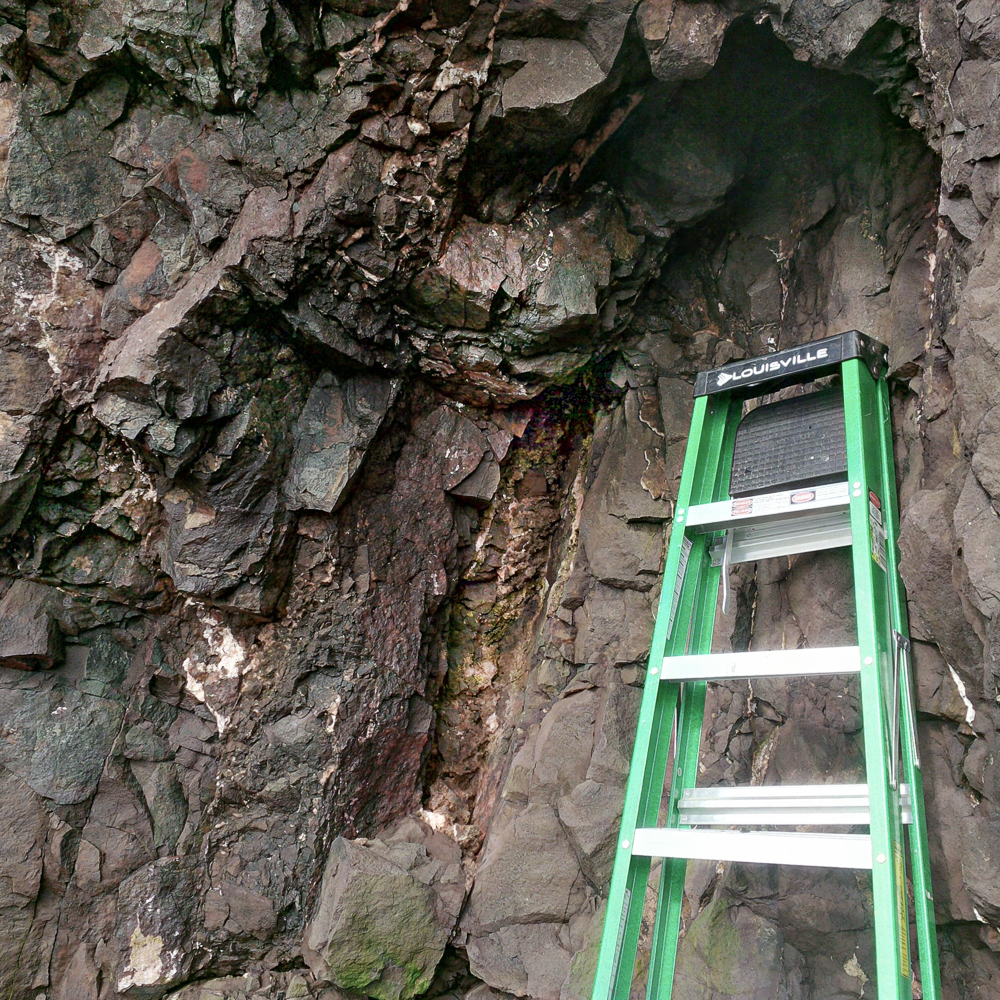
Veins at Two Islands. From a distance, they look like the motherlode! Up close, most are not interesting for collectors.
However… look, deep in shadow, at the elongated cavity near the top, right of centre…
A closer view of that cavity, overhead in the cliff face, reveals beautiful gmelinite crystals.
Terry heads up to explore a gmelinite vein while I hold the ladder
(David Joyce photo)
As I noted above, some of the gmelinites from Two Islands are world class – among the finest known for the species. The best crystals are sharp, glassy and highly lustrous – some are the classic textbook hexagonal dipyramidal crystal form for gmelinite, while others are twinned.
Gmelinite, Two Islands, Cumberland Co., Nova Scotia
Central crystal 1.0 cm
Gmelinite, Two Islands, Cumberland Co., Nova Scotia – 2.6 cm crystal
Gmelinite, Two Islands, Cumberland Co., Nova Scotia – 2.4 cm
Gmelinite, Two Islands, Cumberland Co., Nova Scotia
Field of view 1.7 cm
Gmelinite, Two Islands, Cumberland Co., Nova Scotia – 6 cm
Gmelinite on heulandite, Two Islands, Cumberland Co., Nova Scotia – 7.5 cm
Gmelinite, Two Islands, Cumberland Co., Nova Scotia – 2.7 cm
Gmelinite with heulandite, Two Islands, Cumberland Co., Nova Scotia – 2.8 cm
Gmelinite, Two Islands, Cumberland Co., Nova Scotia – 5.8 cm
Gmelinite (twinned) with heulandite, Two Islands, Cumberland Co., Nova Scotia – 1.8 cm crystal
The analcime crystals from Two Islands can be quite striking, perched alone on sparkling matrix.
Analcime, Two Islands, Nova Scotia – 4.5 cm
David K. Joyce photo.
Five Islands
Excellent mineral specimens have been found throughout Five Islands, going back to the nineteenth century. In fact, specimens from Pinnacle Island (albeit as “Pinnack Island”) are included as the only Canadian entry in Victor Goldschmidt’s famous early 20th century Atlas der Krystallformen.
In recent years, Five Islands has been best known for the exceptional gmelinite pseudomorphs after chabazite (more on these below). These occur at the Pinnacle Rocks site, where there were finds of spectacular specimens in 2004 and 2006. Sadly, the pinnacle that contained the best of these collapsed into the sea, so the best finds of these specimens are past – this is the area at the right of the large pinnacle in the photos below.
At high tide, there is nowhere to land the boat… and the minerals are underwater!
Pinnacle Rocks, Five Islands, at high tide
A few hours later…
Pinnacle Rocks, low tide
One can still find veining and crystals of gmelinite (pseudomorphs after chabazite) at Pinnacle Rocks, however, as you can see below, the veins presently exposed are very tight and it is tough to recover any fine specimens. An additional challenge is presented by the tide waters – this is all under water for much of the tidal cycle, and anything exposed is immediately subjected to the pounding waves, along with the rocks they churn up and toss around.
Narrow veins with gmelinite crystals (pseudomorphs), Pinnacle Rocks
(David Joyce photo)
The mode of occurrence has been described as “gmelinite on chabazite” and also “gmelinite after chabazite”. These specimens are comprised of a crystallized layer of gmelinite over original chabazite, so that the overall shape is the rhombohedral chabazite form. Many of these crystals retain a chabazite core to some degree, although often the chabazite can be quite porous, and some specimens are partial epimorphs, where the original chabazite core area has at least partially dissolved away altogether, leaving hollow spaces inside the outer gmelinite crystal layer. It is possible that some of the internal material is also gmelinite. Given the overall exterior chabazite form, they are “gmelinite pseudomorphs after chabazite”, however it is important to distinguish that these are not gmelinite as a mere replacement material: the beautiful crystallization of the gmelinite prominently displays gmelinite morphological habits and growth patterns, and it is these brilliant gmelinite crystal growths and overgrowths that make these specimens special.
Here are a few specimens of the gmelinite pseudomorphs after chabzite.
Gmelinite pseudomorph after chabazite, Pinnacle Rocks, Five Islands, Nova Scotia – 4.8 cm
Gmelinite pseudomorph after chabazite, Five Islands, Cumberland Co., Nova Scotia – 3.5 cm
Gmelinite pseudomorph after chabazite, Five Islands, Cumberland Co., Nova Scotia – 3.0 cm
Gmelinite pseudomorph after chabazite, Five Islands, Cumberland Co., Nova Scotia – 6.8 cm
One of the most exciting finds at the Islands (really, anywhere on the Bay of Fundy) in the past 25 years was a find in October, 2002 of a large pocket of radiating aggregates of natrolite crystals. This pocket was large enough to crawl into and produced gorgeous specimens.
Natrolite, Five Islands, Cumberland Co., Nova Scotia – 7.5 cm
Natrolite, Five Islands, Cumberland Co., Nova Scotia – 6.0 cm
A year later, in October 2003, a few beautiful specimens of natrolite with analcime were receovered.
Natrolite with analcime, Five Islands, Cumberland Co., Nova Scotia – 9.0 cm
Beautiful specimens of analcime have been collected at Five Islands. Here are two specimens from a find of pink analcime, collected in 2009:
Analcime, Five Islands, Cumberland Co., Nova Scotia – 5.8 cm
Analcime, Five Islands, Cumberland Co., Nova Scotia
Field of view 1.5 cm
In October 2015, Five Islands made news headlines across Canada when a section of Long Island containing an archway fully collapsed. Of course, Terry Collett and Doug Wilson were out on the collapsed rock pile as soon as the dust had settled (!). In the immediate aftermath of the collapse, few specimens were found. However, after winter and spring storms, a few interesting specimens were recovered in 2016.
View from the top of the pile of collapsed rock on Long Island, Five Islands
Here are photographs of a couple of the recovered specimens, with two additional closeup views of the natrolite.
Natrolite with analcime, Five Islands, Cumberland Co., Nova Scotia – 12.0 cm
Natrolite with analcime, Five Islands, Cumberland Co., Nova Scotia
Field of view 4.5 cm
Natrolite with analcime, Five Islands, Cumberland Co., Nova Scotia
Field of view 4.5 cm
Analcime on gmelinite, Five Islands, Cumberland Co., Nova Scotia – 5.5 cm
David Joyce and Terry Collett examining a large seam with calcite and golden-orange stilbite, Five Islands
At the end of an expedition to the Islands, the trip back is beautiful – and even more so if you were lucky enough to have found one or more good specimens to bring home. And of course, before you even arrive at land, you’re already dreaming of massive, destructive new storms on the Bay of Fundy, and the great new pockets and specimens that they could uncover in time for the next expedition…
Thank You!
Thank you to Terry Collett – one of the finest friends you could hope to meet in Mineral World. Terry is a dedicated field collector and true Bay of Fundy expert. His knowledge and expedition-leading have made it possible to share the Bay of Fundy with you through these website posts.
Thanks also to Dan, without whose boat and piloting expertise we’d have to do a lot of swimming.
Of course thanks to Dave Joyce, for the photos, and for all that is part of our road trips and collecting adventures.
Links
Part 1: Nova Scotia Mineral Collecting -The Bay of Fundy (click here)
Mineral Specimens from Nova Scotia’s Bay of Fundy currently available for sale (click here)
IMPORTANT NOTE:
There are serious accidents every year along the Bay of Fundy. Provincial emergency rescue teams are required to respond to evacuate hikers and others, and unfortunately these stories do not always have happy endings. People have lost their lives here. It may look gentle and mild in some of the photographs here (taken on the calmest of days), but absolutely don’t underestimate it – please be careful if you ever visit.
Any arrangements in this area must be made with careful consideration of the tide times and the weather conditions – mistakes in this regard can literally be fatal. Weather conditions on the Bay of Fundy can change incredibly rapidly. One must always have an eye on the time, the tide and the weather: always have a plan for managing a safe exit.
No visit to any Bay of Fundy locality should ever be made alone. Even some of the most careful, experienced Bay of Fundy mineral collectors have required the assistance of one or more additional persons to safely exit a Bay of Fundy mineral locality, either due to injuries or storms.
Many of the trails and access areas are steep and dangerous. The beach cobbles and shore bedrock can be super-slippery, particularly when wet. As between the trails and the shorelines, I think we’ve all fallen somewhere at some point along the way on these excursions.
Use of many of the access trails should not be undertaken without an accompanying guide.
The rocks comprising the cliffs along the Bay of Fundy can be loose and very unstable – some of the rock units are particularly weak. Always wear a hard hat and do not climb the cliffs.
Most of the collecting localities along the Bay of Fundy are unsafe and are certainly not appropriate for children. Beach collecting in a few of the very easy-access beach areas on the Bay of Fundy, away from cliffs, may be fine for children of an appropriate age, provided that it is conducted with continuous adult supervision to ensure, among other things, careful observation of the tides and avoidance of the strong undercurrents that can occur all around the Bay of Fundy.
Many of the sites along the Bay of Fundy are subject to mineral claims, and collecting at such sites should not be undertaken without the permission of the claim holder.
This post does not constitute advice or recommendation to travel to the localities mentioned, and any decision to do so is each person’s own risk and responsibility. Adherence to applicable law and respect of private property are fundamental, and each of us is individually responsible – for ourselves, families and friends, and to the mineral collecting community as a whole – to be compliant and respectful at all times. If you are crossing or conducting any activity on private property, appropriate permissions must be obtained.
References
If you would like to read more about Nova Scotia minerals or research Nova Scotia mineral localities (including beyond the Bay of Fundy), I highly recommend Ronnie Van Dommelen’s great website, The Mineralogy of Nova Scotia
For additional reading, see also Van Dommelen, R. and Collett, T., “An Introduction to Minerals in Nova Scotia and a Report on Recent Collecting” in Rocks and Minerals 81:1 (Jan/Feb 2006), pp. 54-61


